Best Sheer Curtains for Vancouver Condos
November 20, 2025

Living in a Vancouver condo means embracing spectacular views, abundant natural light, and contemporary design. The right sheer curtains can enhance all three while providing privacy and style. Whether you’re in a glass tower in Coal Harbour or a modern low-rise in Mount Pleasant, choosing the perfect sheers requires balancing Vancouver’s unique climate considerations with the specific needs of condo living.
Why Sheer Curtains Work Perfectly for Vancouver Condos
Vancouver’s famously grey skies mean maximizing natural light is essential for creating a bright, welcoming space. Sheer curtains filter daylight beautifully without blocking it entirely, helping combat those long, overcast months from November through March. During summer, when the sun finally makes its glorious appearance, quality sheers diffuse harsh rays while still allowing you to enjoy those coveted water or mountain views.
Condos present unique window treatments challenges. Floor-to-ceiling windows are stunning but can feel exposed, especially in densely built neighborhoods like Yaletown or the West End. Sheers provide daytime privacy without sacrificing openness, and they’re generally more affordable and easier to install than custom blackout solutions – an important consideration if you’re renting or working within HOA guidelines.
Linen-Look Sheers: The Vancouver Favourite
Linen-look sheer curtains have become incredibly popular in condos, and for good reason. These curtains offer a relaxed, organic texture that complements the West Coast aesthetic perfectly. Unlike traditional polyester sheers that can look flat or cheap, linen-look fabrics add depth and sophistication while maintaining that breezy, light-filtering quality you need.
The slightly heavier weight of linen-look sheers also helps them hang beautifully on tall condo windows. They drape elegantly without billowing excessively when you open windows for that precious fresh air during summer months. Look for options in natural tones like ivory, warm white, or soft grey to create a calm, coastal vibe that feels quintessentially Vancouver.
Lightweight Voile for Maximum Light
If your condo faces north or you’re on a lower floor where light is limited, ultra-lightweight voile sheers are your best friend. These delicate, almost ethereal curtains allow maximum light transmission while still providing basic privacy during the day. They’re particularly effective in smaller condos where heavy or textured fabrics might overwhelm the space.
Voile sheers work beautifully in white or cream tones, creating an airy, Scandinavian-inspired look that’s trending in Vancouver’s newer developments. The main consideration is that voile offers minimal privacy once lights are on at night, so many residents pair them with roller blinds or use them in bedrooms where blackout curtains can be drawn when needed.
Ripple Fold vs. Grommet: Modern Hanging Styles
The way your sheers hang can dramatically impact your condo’s aesthetic. Ripple fold (also called wave fold) is the most contemporary option and what you’ll see in Vancouver’s high-end developments. This style creates uniform, flowing waves across the curtain panel, offering a sleek, tailored appearance that suits modern architecture. Ripple fold requires a special track system, which works perfectly with the ceiling-mounted solutions many condos need.
Grommet-top sheers offer a more casual, accessible alternative. The metal rings create soft, rounded pleats that have a relaxed, beachy feel. They’re easy to install with standard curtain rods and slide smoothly for daily use. This style works particularly well in more traditionally styled condos or if you’re aiming for a cozy, lived-in aesthetic rather than ultra-modern sophistication.
Layering Sheers with Blackout Solutions
Vancouver’s summer sunrises start around 5 AM, which is beautiful until you’re trying to sleep in on a Saturday. The smartest approach for condo bedrooms is layering sheer curtains with blackout roller blinds or cellular shades. During the day, you can enjoy filtered natural light and views through your sheers. At night, the blackout layer ensures complete darkness and additional privacy.
This layered approach also improves energy efficiency – something condo owners appreciate during both rainy winter months and those rare heat waves. The air pocket between the sheer and blackout layers provides extra insulation, helping regulate temperature and potentially reducing heating and cooling costs.
Length Matters: Floor-to-Ceiling Drama
Vancouver condos often feature impressive ceiling heights, particularly in newer buildings. To make the most of this architectural feature, hang your sheer curtains as close to the ceiling as possible and let them skim or slightly puddle on the floor. This creates the illusion of even taller ceilings and adds an elegant, custom look.
For rentals where you can’t modify ceiling tracks, opt for extra-long panels (96 to 108 inches) and use ceiling-mounted or wall-mounted rods placed as high as possible. The vertical lines draw the eye upward and make your space feel larger – a valuable trick in compact condo layouts.
Maintenance: Vancouver Weather Considerations
Vancouver’s humidity and occasional ocean salt in coastal buildings mean your curtains need regular care. Choose machine-washable sheer fabrics when possible, and plan to wash them seasonally. White and cream sheers can yellow over time, especially in buildings where smoking was once allowed, so consider ivory or off-white tones that age more gracefully.
For buildings with balconies where curtains might be exposed to open doors and ocean breezes, look for wrinkle-resistant fabrics that maintain their appearance without constant steaming. Quick-dry polyester blends work well in these conditions and stand up to Vancouver’s damp climate better than natural fibers.
Where to Shop for Sheer Curtains in Vancouver
For Vancouver condo / house or business owners and renters looking for quality sheer curtains, Arlene’s Interiors offers an excellent combination of selection, expertise, and local service. Their experienced consultants understand the unique challenges of condo living – from maximizing natural light during grey winter months to creating privacy in glass towers. They can help you choose the perfect sheer fabric and style for your specific windows and design aesthetic, whether you’re looking for modern ripple fold, classic grommet, or custom solutions.
Working with a local specialist like Arlene’s Interiors means you can see and feel fabric samples in Vancouver’s actual lighting conditions before making a decision. Their team can also advise on proper measurements for floor-to-ceiling windows and recommend layering solutions that work with your existing window treatments. For those who prefer the convenience of online shopping, many retailers offer fabric samples and generous return policies, though nothing replaces the personalized service and local expertise of visiting a dedicated window treatment specialist in person.
Creating Your Perfect Vancouver Condo Sanctuary
The best sheer curtains for your home ultimately depend on your building’s orientation, your floor level, and your personal style preferences. Prioritize light transmission if you’re facing north or on a lower floor. Focus on privacy solutions if you’re in a densely built area with close neighboring towers. And always consider the maintenance reality of Vancouver’s climate when making your final selection.
With the right sheers, your condo becomes a light-filled retreat that celebrates natural beauty while providing the comfort and privacy you need. Whether you’re watching the rain streak down your windows or basking in rare summer sunshine, well-chosen sheer curtains frame your life in the city beautifully.
Woven Wood & Bamboo Shades: The Natural Choice for Your Vancouver Home
October 24, 2025
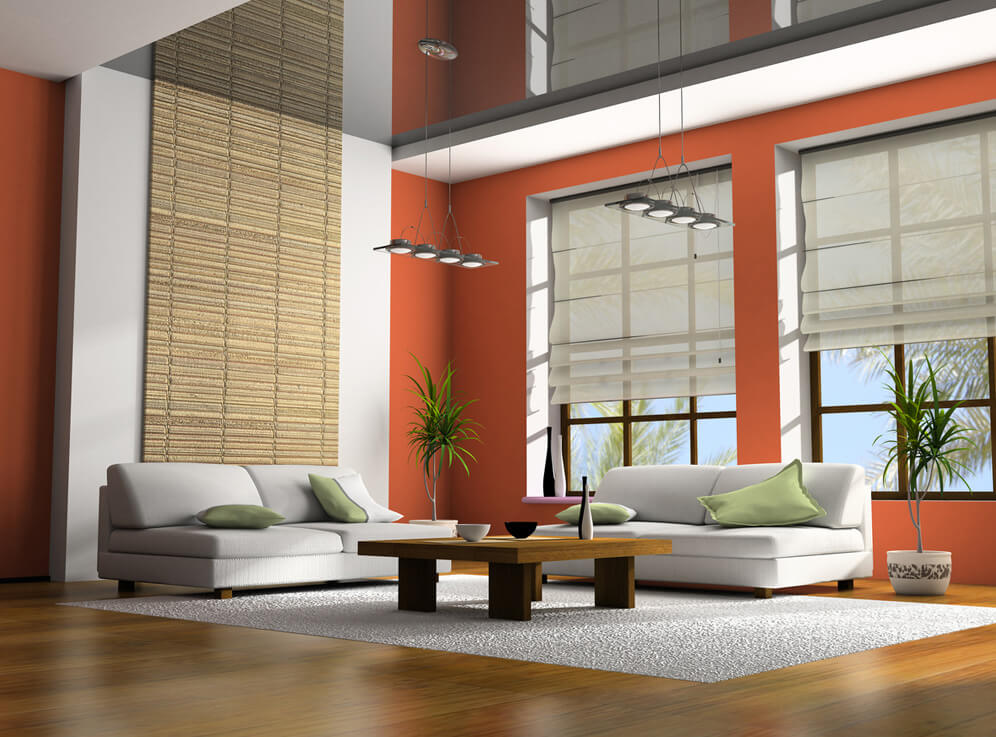
There’s something unmistakably calming about bringing natural elements into your living space. As Vancouver homeowners increasingly embrace sustainable living and biophilic design, woven wood and bamboo shades have surged to the forefront of window treatment trends. These aren’t just window coverings – they’re statements about how we want to live.
Why Woven Wood Shades Are Having Their Moment
The appeal of woven wood and bamboo shades goes far beyond aesthetics, though they’re undeniably beautiful. These natural window treatments represent a perfect intersection of environmental consciousness, timeless design, and practical functionality that resonates with today’s homeowners.
The Eco-Friendly Advantage
Unlike synthetic materials that can take centuries to decompose, woven wood shades are crafted from renewable resources like bamboo, jute, rattan, and reed grasses. Bamboo, in particular, is a sustainability superstar – it grows rapidly without pesticides, regenerates from its own roots, and absorbs more carbon dioxide than many hardwood trees.
When you choose woven wood shades, you’re making a choice that reduces your environmental footprint while creating a healthier indoor environment free from off-gassing synthetic materials.
Natural Texture That Transforms Spaces
In an era of sleek minimalism and clean lines, woven wood shades add depth and warmth that’s impossible to replicate with synthetic alternatives. Each shade features unique natural variations in color and texture, ensuring your window treatments are truly one-of-a-kind.
The organic weave patterns create visual interest without overwhelming a room. They work beautifully with:
- Modern minimalist interiors that need warming up
- Coastal-inspired spaces seeking relaxed elegance
- Bohemian designs embracing natural materials
- Traditional homes wanting understated sophistication
Light Filtering Magic
One of the most compelling features of woven wood shades is how they handle natural light. Rather than blocking it entirely, the natural weave creates a gentle, filtered glow that softens harsh sunlight while maintaining privacy. This creates an inviting ambiance throughout the day – perfect for Vancouver’s bright summer days and cozy winter afternoons.
For rooms requiring complete darkness, many woven wood shades can be lined with blackout backing, giving you the best of both worlds: natural beauty with practical light control.
Practical Benefits for Vancouver Homes
Durability That Lasts
Quality woven wood shades are remarkably durable. The natural fibers are strong and resilient, capable of withstanding daily use for years. When properly maintained, these shades can last a decade or more, making them a smart long-term investment.
Energy Efficiency
Natural materials provide excellent insulation properties. Woven wood shades create an additional barrier at your windows, helping to keep your home cooler in summer and warmer in winter. This can translate to reduced energy bills – a benefit that compounds over the years.
Low Maintenance
Contrary to what you might expect, woven wood shades are easy to care for. Regular dusting with a soft brush attachment or feather duster is typically all that’s needed. For deeper cleaning, a slightly damp cloth works wonders.
Customization Options
Today’s woven wood shades offer extensive customization to match your specific needs and style preferences:
Materials: Choose from bamboo, jute, reed, rattan, or mixed natural grasses, each offering distinct texture and color variations.
Weave Patterns: From tight, uniform weaves to loose, organic patterns, the weave style dramatically impacts both appearance and light filtering.
Colors & Stains: While many homeowners love the natural, unstained look, options range from light honey tones to rich espresso finishes.
Operating Systems: Select from cordless lift, continuous loop chain, motorization, or classic cord systems. Motorized options are increasingly popular for hard-to-reach windows and smart home integration.
Lining Options: Add privacy or blackout linings without sacrificing the natural look from the interior side.
Ideal Rooms for Woven Wood Shades
Living Rooms: Create a welcoming gathering space with warm, filtered natural light.
Bedrooms: Add serene, spa-like tranquility (pair with blackout lining for sleep-friendly darkness).
Dining Rooms: Elevate the ambiance while maintaining an inviting atmosphere for meals.
Home Offices: Reduce screen glare while maintaining connection to the outdoors.
Sunrooms: Filter intense sunlight without blocking views or making the space feel closed off.
Making the Right Choice
When selecting woven wood shades for your Vancouver home, consider these factors:
Window Exposure: South and west-facing windows may benefit from tighter weaves or added linings to manage intense afternoon sun.
Moisture Levels: While woven wood shades are durable, they’re best suited for dry areas. For high-moisture environments like bathrooms, consider faux wood alternatives that mimic the look.
Privacy Needs: Tighter weaves provide more privacy, while looser weaves create a more relaxed, breezy feel but offer less screening.
Design Cohesion: Think about how the shade will complement your existing furniture, flooring, and overall design aesthetic.
The Investment in Natural Beauty
While woven wood shades may have a higher upfront cost than basic synthetic options, they offer exceptional value through their durability, timeless appeal, and environmental benefits. They’re an investment in your home’s beauty and your personal well-being.
Experience Woven Wood Shades at Arlene’s Interiors
At Arlene’s Interiors, we’ve helped countless Vancouver homeowners discover the transformative power of natural window treatments. Our expert team can guide you through material selection, customization options, and professional installation to ensure your woven wood shades are perfectly suited to your space.
Visit our showroom to see and feel the difference that natural materials make. Touch the textures, observe how light filters through different weaves, and envision how these beautiful, sustainable window treatments will enhance your home.
Ready to bring the beauty of nature indoors? Contact Arlene’s Interiors today for a complimentary consultation and discover why woven wood and bamboo shades are the perfect choice for your Vancouver home.
Arlene’s Interiors has been serving Vancouver with premium custom window treatments, upholstery, and drapery services since 1983. As an authorized Hunter Douglas dealer, we offer the finest selection of woven wood shades backed by expert installation and service.
Blinds vs. Curtains vs. Shades – Choose the Best
December 19, 2024

Window coverings are more than just a practical necessity; they play a significant role in defining the aesthetic and functionality of your home. Choosing between blinds, curtains, and shades can feel overwhelming with all the options available. Each offers unique features, from controlling light and privacy to adding a decorative touch to your space.
If you’re navigating this decision for your home, we’ve got you covered. This guide breaks down the differences between blinds, curtains, and shades, factors to consider when choosing, their uses in various rooms, and even cost comparisons to help you make an informed choice.
Understanding the Differences – Blinds, Curtains, and Shades
Not all window treatments are created equal. Before you pick what works for your home, it’s essential to understand what each option brings to the table.
Blinds
Blinds are made up of horizontal or vertical slats, typically made from materials such as wood, metal, or PVC. They’re designed to give you full control over light and privacy with adjustable slats.
Features and Benefits
- Light Control: Easily adjustable to control the amount and direction of light entering a room.
- Ease of Cleaning: Usually require just a quick dusting, making them incredibly low-maintenance.
- Durability: Perfect for high-moisture areas like bathrooms and kitchens, thanks to their water-resistant options.
Cons
While blinds are practical, they may lack the aesthetic softness of curtains or shades. They can also feel less cozy in spaces like bedrooms.
Curtains
Curtains are fabric panels and arguably the most traditional choice for window coverings. Available in a wide range of styles, colors, and materials, they double as both functional and decorative elements.
Features and Benefits
- Versatile Aesthetics: With endless options, curtains work for both casual and formal spaces.
- Energy Efficiency: Heavier curtains can help insulate your home by minimizing heat loss through windows.
- Soundproofing: Certain materials can absorb sound, offering a quieter indoor environment.
Cons
Curtains require regular maintenance, like washing or dry-cleaning, and are often more challenging to clean than blinds or shades.
Shades
Shades are fabric panels that snugly fit your window frame. They’re typically operated by a lift mechanism and come in various patterns and materials.
Features and Benefits
- Minimalist Design: Clean, simple lines make shades an ideal choice for modern and minimal interiors.
- Light Diffusion: Depending on the fabric, shades can filter light beautifully or block it out completely.
- Variety: Options like Roman shades, roller shades, and cellular shades allow for a highly customized look.
Cons
Unlike blinds, shades can’t be adjusted to allow partial light—they’re either open or closed.
Light, Privacy, and Energy Efficiency
Each of these coverings affects your space differently:
- Blinds excel in adjustable light control and privacy.
- Curtains add warmth, making them perfect for colder months and offering great sound insulation.
- Shades strike a balance, offering a sleek look with functionality. Cellular shades, for instance, are ideal for energy efficiency as they trap air to insulate your home.
Factors to Consider When Choosing
Your choice of window treatments shouldn’t just be about style—it needs to fit your particular needs and lifestyle.
Room Size and Function
The purpose of the room often dictates the ideal window treatment:
- Living Rooms benefit from versatile options like shades or curtains that allow natural light to filter through.
- For bedrooms, blackout curtains or shades are excellent choices for better sleep.
- High-humidity spaces like kitchens and bathrooms call for moisture-resistant blinds.
Aesthetic Preferences
- Curtains add softness and drama to any room, perfect for traditional or eclectic styles.
- Blinds are clean and understated, fitting well with modern or industrial aesthetics.
- Shades offer a middle ground—functional yet stylish, perfect for minimalist spaces.
Maintenance and Durability
- Blinds are the easiest to clean and highly durable.
- Curtains require more upkeep, often needing washing or professional cleaning.
- Shades, depending on the material, require gentle cleaning and can stain easily over time.
Blinds, Curtains, and Shades in Different Rooms
The right window treatment can elevate the functionality and ambiance of different rooms in your home.
Living Rooms
- Go for Roman shades or sheer curtains to softly diffuse natural light while maintaining a bright, welcoming feel.
Bedrooms
- Layer heavy blackout curtains with light, sheer curtains to ensure both privacy and light filtering during the day.
Kitchens and Bathrooms
- Opt for blinds made from moisture-resistant materials like faux wood or aluminum. Alternatively, roller shades with wipe-clean fabrics work well.
Cost Comparison and Long-Term Value
Your budget often plays a significant role in choosing window treatments. Here’s a general breakdown:
- Blinds are cost-effective, with prices ranging from $30 per window for vinyl to $200+ for custom wood blinds. They’re durable and long-lasting.
- Curtains range from $20 per panel for a budget option to over $300 for custom-lined drapes. They can be more expensive in the long run due to cleaning and replacements.
- Shades sit in the middle, with options like roller shades starting at $40 and Roman shades or cellular shades costing upwards of $150 per window.
For value, consider the longevity and energy savings each offers. Cellular shades, for instance, save on heating and cooling costs, while curtains can provide better insulation.
Trends in Window Coverings
- Sustainability is leading the charge, with eco-friendly materials like bamboo and organic cotton.
- Smart Technology is growing more popular, with motorized blinds and shades that can be controlled via app or voice assistant.
- Layered Looks combine functionality with flair by pairing different treatments. Think blinds with soft sheer curtains for a modern twist.
Find the Perfect Match for Your Home
When it comes to choosing between blinds, curtains, and shades, there’s no one-size-fits-all answer—it all depends on your needs, budget, and style. Considering factors like light control, energy efficiency, and long-term maintenance can help.
Still unsure? The right design advice can make all the difference. Contact our window treatment specialist to ensure your windows make a stunning statement.
Enjoy the process—your home deserves it!
Improve Your Interior Design with Premium Smart Blinds
May 23, 2024
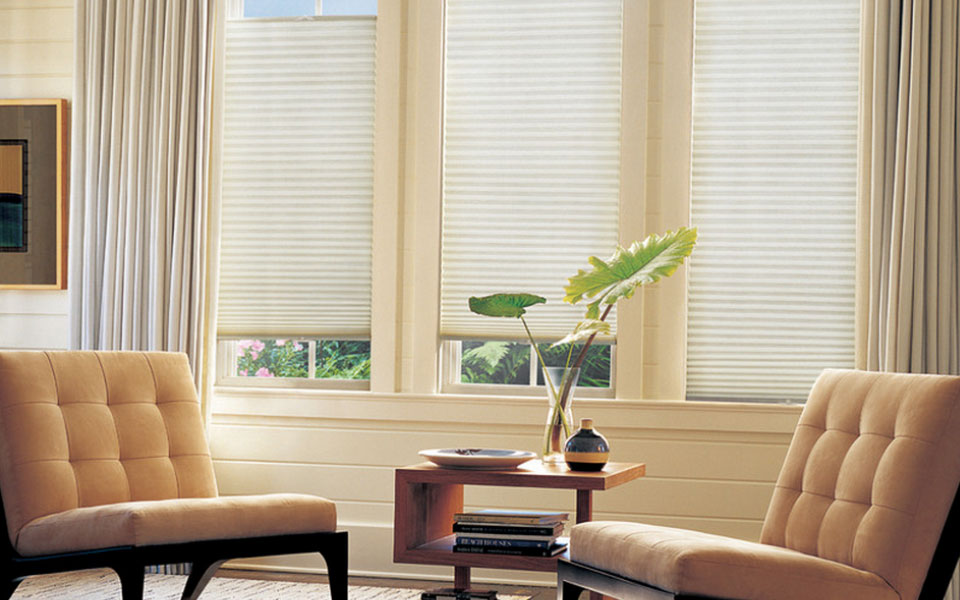
Improve Your Interior Design with Premium Smart Blinds
Are you a homeowner or an interior design enthusiast in Vancouver looking to elevate your living space with the latest in home automation? Look no further! Premium quality smart blinds are revolutionizing how we think about window treatments, offering both functionality and aesthetic appeal. In this comprehensive guide, we’ll explore why motorized blinds are the best choice for your home, focusing on their benefits, customization options, and the unique features that make them worth the investment.
Why Choose Smart Blinds?
Smart blinds are an excellent addition to any modern home. These innovative window treatments offer several advantages over traditional blinds:
- Ease of Use: With motorized blinds, you can control your window coverings with the touch of a button, a voice command, or even a schedule set on your smartphone.
- Energy Efficiency: Automating your blinds helps regulate indoor temperatures, reducing the need for artificial heating or cooling and lowering your energy bills.
- Enhanced Privacy and Security: Schedule your blinds to open and close at specific times to give the impression that someone is always home, even when you’re away.
The Benefits of Motorized Blinds
A Durable Investment
One of the key reasons to opt for motorized blinds is their durability. These blinds are built to last, making them a sound investment for homeowners. The motors used in high-quality smart blinds are designed to withstand frequent use, ensuring longevity and consistent performance.
Best-in-Class Silent Motor
Nothing disrupts the tranquility of a beautifully designed interior like noisy appliances. The best smart blinds come equipped with silent motors, ensuring smooth and quiet operation. This feature is particularly beneficial in bedrooms, nurseries, and other quiet spaces where peace is paramount.
Wide Variety of Fabrics and Blind Styles
When it comes to customization, the sky’s the limit with smart blinds. These window treatments can be tailored to match your unique style and preferences. Choose from a wide array of fabrics, colors, and blind styles to complement your existing décor. Whether you prefer the sleek look of roller blinds or the classic appeal of Roman shades, there’s an option to suit every taste.
Excellent for Hard-to-Reach or Large Windows
Motorized blinds are particularly advantageous for windows that are hard to reach or unusually large. Traditional blinds can be cumbersome and inconvenient to operate in these situations. Motorized options eliminate this hassle, allowing you to adjust your blinds effortlessly, no matter their location.
Easy Operation
One of the most significant benefits of smart blinds is their convenience. Operate multiple blinds simultaneously with just one button, making it easy to create the perfect ambiance throughout your home. Integrate your blinds with home automation systems like Alexa, Google Home, or Apple HomeKit for seamless control.
Scheduled Programming
Take advantage of the scheduling feature to automate your blinds. Program them to open with the sunrise and close as the sun sets, ensuring you wake up to natural light and enjoy privacy at night without lifting a finger.
Incorporating smart blinds into your home is a sure way to enhance both functionality and aesthetics. Their durability, silent operation, customizability, and convenience make them a standout choice for homeowners and interior design lovers alike. Whether you’re dealing with hard-to-reach windows or simply want the luxury of automated blinds, these premium window treatments are the ultimate solution.
Ready to transform your living space with smart blinds? Contact Vancouver Blind Company – Arlene’s today.
Unveiling Top Window Treatment Trends for Your Home in 2023
September 18, 2023
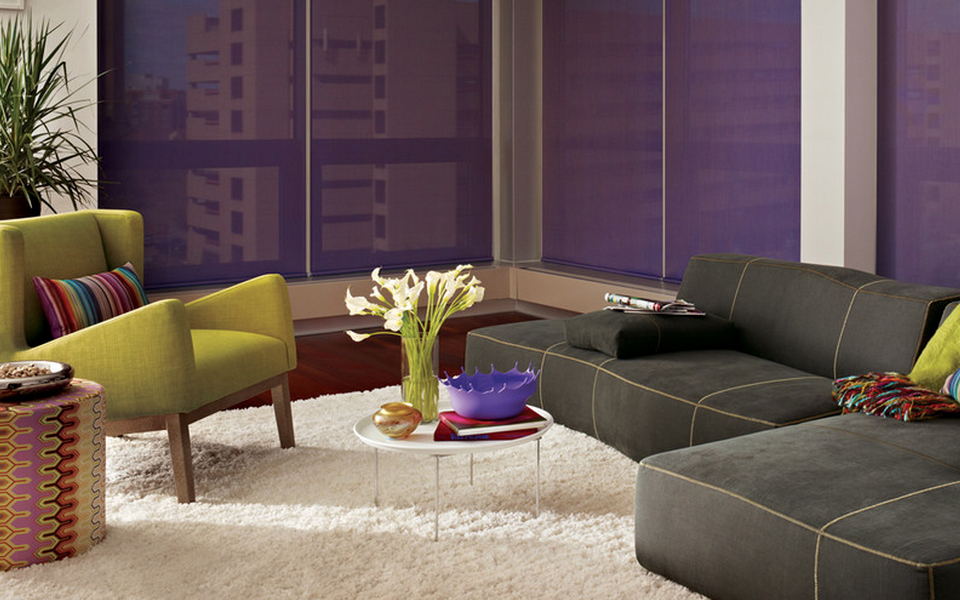
Windows aren’t just functional aspects of your home’s architecture; they’re a canvas for creativity and style. The perfect window treatment can significantly enhance the atmosphere of a room, seamlessly merging aesthetics with practicality. However, with an array of options available, selecting the right window treatments can be quite a task. To help you navigate through this, we’ve compiled a list of trending window treatment ideas for your home, ranging from classic Roman shades to chic drapes.
Roman Shades:
Roman shades are a classic choice that never goes out of style. Available in a plethora of fabrics, designs, and patterns, these shades can accentuate any room’s decor. Besides being aesthetically pleasing, Roman shades are also effective at temperature regulation, making them a functional addition to your home.
Drapes:
Drapes serve dual purposes – they ensure privacy and offer insulation while adding a decorative touch to your space. Available in an assortment of fabrics, prints, and colors, drapes can inject a vibrant burst of color and texture to any room. Opt for heavier materials like velvet or wool if you’re looking for energy-efficient drapes.
Shutters:
Shutters exude a timeless charm that can complement almost any decor style. These versatile window treatments come in various sizes, shapes, and colors, making them suitable for classic or farmhouse-style home decor. Shutters not only provide privacy and light control but can also help regulate room temperature.
Roller Shades:
For those who prefer simplicity and functionality, roller shades are an ideal choice. These easy-to-operate window treatments come in a variety of colors, patterns, and textures. Roller shades are particularly apt for high-traffic areas such as kitchens due to their ease of maintenance.
Vertical Blinds:
Ideal for larger windows or sliding glass doors, vertical blinds offer complete privacy and light control. Available in a variety of materials, including wood, faux wood, vinyl, or fabric, these blinds can be customized to match your home decor.
Selecting the right window treatment for your home involves balancing style, functionality, and budget. With the wide range of options discussed above, you’re sure to find something that caters to your specific needs and preferences. Remember, your choice of window treatment should align with your home’s requirements, such as insulation, privacy, and light control. Don’t hesitate to mix and match different types of window treatments to create a unique and stylish look. After all, window treatments are more than just functional – they’re an essential aspect of your home’s personality. Choose wisely!
Understanding the Difference between Drapes and Curtains
August 17, 2023

When it comes to interior design and home décor, the terms “drapes” and “curtains” are often used interchangeably, but they actually refer to distinct window treatments with different functions and styles. Understanding the differences between drapes and curtains can help you make informed choices for your home’s aesthetic and practical needs. In this blog post, we’ll delve into the nuances of drapes and curtains, helping you make the right choice for your living spaces.
Drapes: Elegance and Functionality:
Drapes, also known as draperies, are window coverings that are typically made from heavy, lined fabric. One of the key distinctions of drapes is their weight and thickness, which provide enhanced light control, insulation, and privacy. Due to their heftier construction, drapes are excellent at blocking out light and maintaining a cozy atmosphere, making them a great choice for bedrooms and living rooms. The lining in drapes not only adds to their opulent appearance but also contributes to their functionality.
Key Features of Drapes:
- **Fabric Weight:** Drapes are usually made from heavier materials like velvet, brocade, or damask, giving them a luxurious and formal feel.
- **Lining:** Drapes are often lined with fabric that can provide thermal insulation and light-blocking properties.
- **Formal Aesthetics:** Drapes are associated with more formal and elegant interior designs due to their rich fabrics and elaborate pleating styles.
- **Enhanced Light Control:** Drapes excel at blocking out sunlight and maintaining a darker environment, ideal for spaces where you want to control the amount of natural light.
Curtains: Versatility and Style:
Curtains, on the other hand, are lighter window treatments made from a variety of fabrics, ranging from sheer to semi-opaque. Curtains are generally less formal than drapes and offer a wide range of design possibilities. They come in various lengths, colors, patterns, and textures, allowing for greater customization to suit different room aesthetics.
Key Features of Curtains:
- **Fabric Variety:** Curtains can be crafted from lightweight fabrics like cotton, linen, or polyester, making them versatile for different design preferences.
- **Transparency Options:** Curtains can range from sheer to semi-opaque, providing varying levels of privacy and light filtration.
- **Casual Appeal:** Curtains are often associated with a more casual and relaxed atmosphere, suitable for spaces like kitchens, dining rooms, and informal living areas.
- **Decorative Elements:** Due to their lighter nature, curtains are ideal for showcasing decorative elements such as patterns, prints, and tie-backs.
Choosing Between Drapes and Curtains:
When deciding between drapes and curtains, consider the following factors:
– **Functionality:** Determine your light control, insulation, and privacy needs.
– **Room Style:** Consider whether you want a formal or casual atmosphere in the room.
– **Aesthetic Preferences:** Think about the fabric, color, pattern, and texture that align with your design vision.
– **Maintenance:** Keep in mind that heavier drapes might require more upkeep than curtains.
In the world of interior design, drapes and curtains play distinct roles, offering both practical benefits and aesthetic appeal. Drapes provide a luxurious, formal touch with enhanced light control and insulation, while curtains offer versatility and a wide range of design options to suit various room styles. By understanding the differences between these two window treatments, you can confidently select the right option to enhance the beauty and functionality of your living spaces.
How to Order Custom Blinds: A Complete Guide for Homeowners
July 25, 2023

How to Order Custom Blinds: A Complete Guide for Homeowners
Ordering custom blinds can be both exciting and daunting. On one hand, custom blinds offer a unique opportunity to tailor window treatments to your exact specifications, ensuring that your interior decor vision is fulfilled. On the other hand, the process of ordering custom blinds can be overwhelming for those who are unfamiliar with the process. Whether you’re looking to update your living area or simply spruce up your windows, this complete guide will walk you through the steps to successfully order custom blinds for your home.
Step 1: Choose Your Style
The first step in ordering custom blinds is choosing the style you want. There are several different styles to choose from, including roller shades, Roman shades, wood blinds, and more. Some styles offer more privacy and light blocking capabilities than others, so you’ll want to consider what is most important to you. You’ll also want to consider the overall aesthetic of your space and choose a style that complements your decor.
Step 2: Measure Your Windows
Once you’ve chosen a style, the next step is to measure your windows. Properly measuring your windows is crucial to ensure a perfect fit for your custom blinds. Be sure to measure both the width and height of the window, as well as the depth of the window frame. It’s also a good idea to measure multiple times to ensure accuracy.
Step 3: Select Your Materials and Colors
After you’ve chosen a style and measured your windows, the next step is to select your materials and colors. Your material choice will depend on several factors, including your budget, desired level of light control, and personal preference. Additionally, you’ll want to choose a color that complements your decor.
Step 4: Place Your Order
Once you’ve completed the first three steps, it’s time to place your order. Some companies offer online ordering, while others require you to order in-store or over the phone. Be sure to double-check your measurements, materials, and colors to ensure they are correct before placing your order.
Step 5: Installation
After you’ve placed your order, you’ll need to wait for your custom blinds to be manufactured. Once they are ready, the company will contact you to schedule installation. Installation is typically a quick and easy process, and most companies will handle the entire process from start to finish.
Ordering custom blinds doesn’t have to be a daunting process. By following these five simple steps, you’ll be well on your way to creating the perfect window treatments for your home. Remember to choose a style that complements your decor, measure carefully, select the right materials and colors, place your order, and wait for installation. With a little patience and some attention to detail, you’ll have beautiful custom blinds in no time at all.
How to Clean Blinds
February 23, 2023

How to Clean Blinds
Cleaning your blinds is a chore that people often avoid. It can seem like a huge job, to have to clean every slat, and you might feel tired just thinking about it. However, cleaning your blinds doesn’t have to be an ordeal, and if you get in the habit of giving them a light cleaning frequently, then you won’t face build up of dust and grime. This is especially important if you have pets in your house who shed, or family members with allergies or breathing troubles who are bothered by dust and dander. In this article, we will go over some tips for light cleaning and deep cleaning your blinds and window coverings. With the following tips, your blinds will look professionally cleaned.
Light cleaning
Light cleaning mostly consists of regular dust removal and spot cleaning. You can do this with a blinds duster or a vacuum cleaner with the upholstery attachment, and a damp microfiber cloth. Another smart tip is to put a cotton sock over your hand, and dip it in clean water. Use water with a bit of dish soap to clean more stubborn bits of grime that your dusting doesn’t remove. Light cleaning can be done any time you are otherwise cleaning and vacuuming the room the blinds are in. Ideally, you should at least dust your blinds every two to three weeks. And finally, it’s a good idea to clean your blinds BEFORE you vacuum or sweep the rest of the room, because you will be knocking dust onto the floor.
Vertical blinds: Hold the bottom of each slat in one hand and gently wipe from top to bottom with a damp cloth or with your vacuum or duster. Make sure you go from top to bottom so you don’t accidentally unhook the slat. Also, don’t forget to wipe both sides.
Horizontal blinds: First, turn the slats so they are closed. However, if the slats overlap with the row below, don’t close the blinds all the way. Now you can dust or vacuum the slats, starting at the top and working your way to the bottom. When you are done one side, turn the slats the other way and clean the other side.
Wooden shades and shutters: You can use the techniques above. Also, you might want to wipe wooden window treatments with furniture polish when you are done cleaning them.
Fabric shades: Fabric shades such as Roman blinds can be vacuumed with a brush attachment. Any spots and stains can be spot-treated with a bit of dish-soap or laundry soap in water. Dab the mixture onto the stain with a damp cloth, and then wipe away with clean water. If the stain can’t be removed this way or you are left with a water mark, you may want to take the blind down and take it to a dry cleaner for a full cleaning.
Drapes: Like fabric shades, you can vacuum your drapes. Again, you should be careful with spot treatments, as you can leave water marks on luxury fabrics. For deeper cleaning, you may want to get them professionally cleaned.
Deeper cleaning
There are a number of reasons that you might need to deep clean your blinds. For example, the blinds you have up in your kitchen may get coated in a stubborn layer of dust and kitchen grease, which is very difficult to fully remove with just a cloth. Another possible problem is windows that face onto busy roads. The window-facing side of your blind can get covered in pollution particles, which again is hard to remove completely with just a cloth. Or you may have an accident and spill a beverage on your Venetian blinds!
Whatever the case, it can be very tedious to scrub every single slat one by one. However, what’s the alternative? We recommend soaking your blinds in your bathtub! Try the following process:
- Remove the blinds or the slats from their mounting and set them aside carefully
- Fill your tub with warm water, and add a cup of baking soda and a few squirts of dish soap.
- Place the blinds gently in the bath (be careful not to tangle cords) and let them soak for about an hour
- Drain the water and rinse the blinds with clean water. If there are any stubborn dirt spots left, you can wipe them with a cloth and the grime should come off easily.
- Let the blinds dry before you hang them back up again. A good idea is to blot extra water with an old towel and then lay them flat on a clean sheet until dry.
White vinyl blinds can get yellowed or discoloured from UV rays, and a simple soak isn’t likely to solve this problem. That doesn’t mean you are necessarily stuck with dingy blinds, though. Try filling your tub with cold water and adding three cups of liquid bleach. Then, place the blinds and soak them for a maximum of ten minutes. Bleach can weaken fibres so you want to be careful not to soak the blinds for too long, or the cords may be damaged. Drain the bleach out and rinse the blinds with cold, clean water and dry as above. With any luck, your blinds will be brighter and whiter.
Finally, you may wonder what special tips and tricks professional cleaners use. Truthfully, they mostly use the exact same methods and tools we talk about above. A professional cleaner’s secret weapon is usually a good spray cleaner and a stash of microfiber cloths, not a special cleaning machine or secret technique. We can’t stress enough that dusting your blinds frequently means you’ll have to deep clean less, and it makes the job easier over all. Also, your blinds will look better and last longer. And good window treatments are an investment that you make in your home, so treat them well.
What is the Difference Between Curtains and Drapes?
January 24, 2023
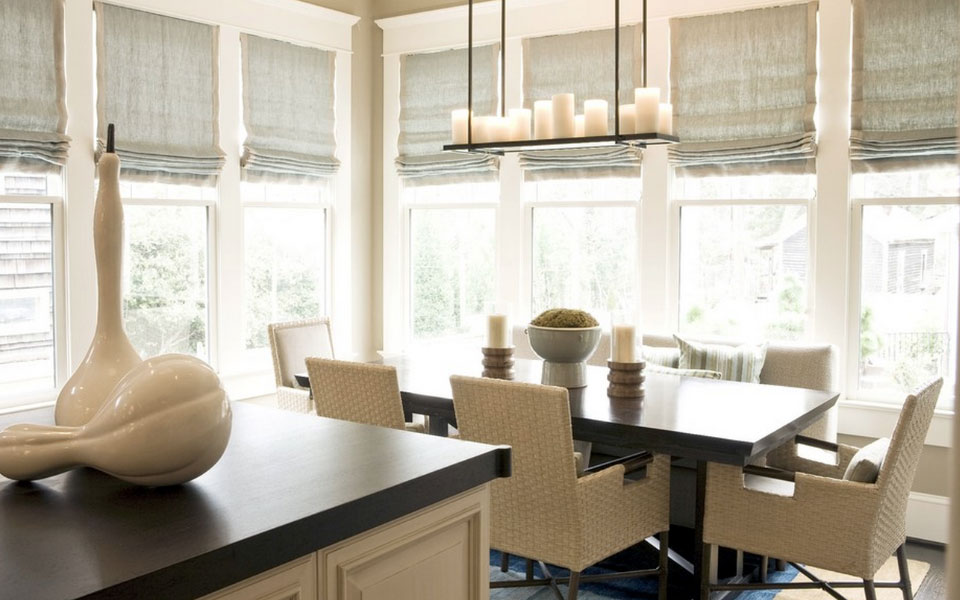
What is the Difference Between Curtains and Drapes?
If you are shopping for new window coverings, you have probably come across different resources telling you that you need to invest in either curtains or drapes. And, you may be quietly asking yourself, “aren’t curtains and drapes the same thing?” This is a common question, because, at a first glance, they seem to be basically the same thing! After all, both refer to some nice pieces of fabric that cover your windows and, hopefully, complement your decor. However, there are some differences between curtains and drapes, and knowing these differences can make shopping easier.
Curtains:
In a nutshell, curtains are fabric panels, often sold by the pair, that cover your windows and provide privacy. These window coverings are generally made of lightweight, washable fabrics like sheer cottons and linens, and they are easy to install. Curtains often still let in some light because they are unlined and made of light fabrics. Curtains are meant to provide privacy and complement your home decor, without creating a sense of heaviness. Modern home designs often use curtains because they make a space feel softer and don’t dominate a room.
Drapes:
Confusingly, drapes are ALSO fabric panels, often sold by the pair, that cover your windows and provide privacy. So how is a drape different than a curtain? There are a number of differences. First, drapes are usually made of heavier, stiffer fabrics like velvet and damask, and they are usually lined. This means they are better at blocking out light and sound and at providing insulation, so they might be a better choice in a bedroom. However, this also means that drapes usually need to be dry-cleaned if they get dusty or dirty, since they can’t just be thrown in the wash. Furthermore, they are meant to make a statement in a room, and are usually long enough to stretch from floor to ceiling. Finally, many drapes have complicated mountings that require professional installation – they can even be motorized. For this reason, the cost of buying and installing drapes is generally much higher than even luxury curtains. A lot of modern homes shy away from drapes because of the up-front costs, despite the fact that good quality drapes can be both beautiful and functional.
Which to choose?
If drapes are in your budget, they can be a statement piece in your home that also provide insulation from light, sound and temperature changes. Therefore we suggest that you keep an open mind to them. However, curtains might meet your needs, especially if they are combined with blinds to better block light. Drapes and curtains are traditionally hung together for a very luxurious effect, with the sheer curtains framed by the dramatic drapes. Whatever you decide is right for your home, you will have the best results buying your window coverings from experienced professionals, so do your research.
How to Choose Drapes for a Bedroom
December 23, 2022
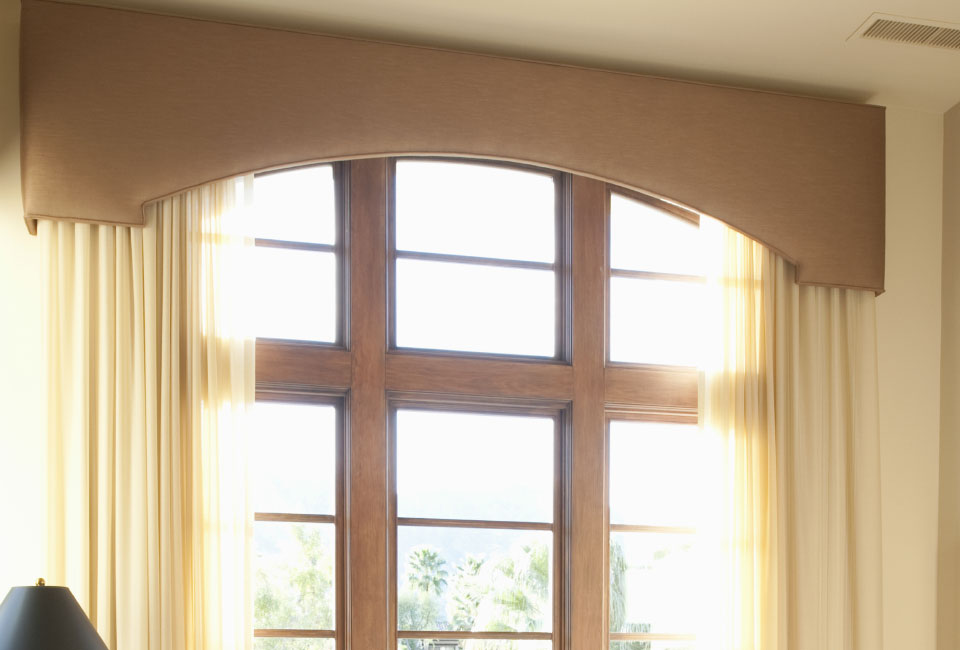
How to choose drapes for a bedroom
Choosing window coverings for your bedroom can be different than planning for other rooms in your home. This is because, in a bedroom, light management can be more important than it is in other rooms. When we are sleeping, one of the factors that signals our brain that it is time to wake up, is when the amount of light in the bedroom increases. Therefore, choosing drapes that don’t manage light properly for your needs, can cause you to sleep more poorly. You might struggle to fall asleep at all, or find that you wake up easily in the night, or wake up earlier than you want. Indeed, what do you need to consider when you choose drapes for a bedroom?
Drapes and other window coverings do several jobs in a room. Window coverings help manage light levels, keep rooms warm or cool, give you privacy, and contribute to the room’s decorative theme. When you choose window treatments for your bedroom, you will want to keep all these jobs in mind. Let’s review each one.
1. Light levels.
Drapes and window coverings help you manage light in your living space. As we said before, this is extra important in a bedroom, to help you get restful sleep. First of all, assess light pollution in your bedroom. At night, is there lots of light coming in from street lights, car headlights, or nearby buildings? If so, you may want to get light-blocking window treatments like lined drapes, blackout curtains, or blinds. These are also helpful if the sun wakes you up early in the morning. However, if you live in an area with no light pollution, you may not need such heavy drapes and covers.
2. Privacy.
If you have a bedroom that is in the line of sight of a street or other buildings, you may want window coverings that let in natural light during the day while also giving you privacy. Sheer curtains, Venetian blinds, and perforated blinds can let light in while keeping eyes out. These can be pairs with lined drapes and blackout curtains to manage light levels, too.
3. Insulation.
People often underestimate how good drapes and blinds are at keeping rooms warm or cool. If you have old drafty windows, thick drapes can help insulate your room, by trapping a layer of air between the fabric and the window. Furthermore, if you have a south-facing room, even opaque blinds can help you stay cool by keeping the sun out.
4. Style.
Last but not least, your choice of drapes helps make your bedroom feel cozy and personal. This is your most private space, and you should feel comfortable in it. Therefore, many people choose luxurious fabrics like velvet for their bedroom drapes. This can help you feel like you are sleeping in total luxury.
Make your bedroom into your sanctuary, and get a good night’s sleep, by choosing drapes that really meet your needs.
Fall in Vancouver: Window Treatments
November 23, 2022

Fall in Vancouver: Window Treatments
Fall in Vancouver is often a peculiar mix of glorious autumn colours and grey rain, and the poignant joy of the last crisp, sunny days that are growing shorter and shorter as winter approaches. If you are like most Vancouverites, you are spending more and more time at home, and if you feel a sudden need to spruce up your living space, you aren’t alone! Lots of people update their interior design in the fall, so they have the winter to enjoy it, and a simple, cost-effective way to upgrade your living space is to redo your window treatments. It can also be a frugal upgrade, as blinds and drapes can significantly reduce heat loss through your windows when kept closed. However, this means you have to look at them a lot more, so you want to like them, too. Let’s consider some simple options for changes you can make to your window treatments before the winter closes in.
First, let’s look at some practical considerations.
Insulation
The insulation that blinds, curtains and drapes can provide in cold weather is substantial. If you are looking for ways to save money on your heating bill, upgrading your window treatments should be high on your list. When closed, well-fitted, quality blinds and drapes will create a cushion of air between the window treatment and the exterior window and frame, which will dramatically reduce heat loss from these windows. If you tend to see condensation on your windows, this is a sign you are losing heat through them and insulation will make a difference for you.
Privacy
Vancouver is a city in a northern latitude and as our nights grow longer, it’s easier to see into our homes, since we are awake and have the interior lights on for a larger part of the day. If you want to maintain privacy, make sure you have windows and blinds that are opaque from the outside.
Creativity and whimsy are important as well, and as we mentioned before, fall is a great time to consider making any decorative changes that will let you enjoy your home more in the coming months.
Here are a few fun ideas for autumnal upgrades.
Combining window treatments
An exciting reason to think about combining treatments, such as having blinds and drapes, is that you can have an element of the window treatment that you can change with the seasons. For example, if you have a nice, neutral blind as the basic treatment, you can swap out drapes seasonally – such as having gauzy sheer drapes in the summer, and then dramatic, heavy drapes in a striking colour for the fall and winter. This also lets you try out colour schemes you may not want to live with one hundred percent of the time.
Be bright
Fall and winter in Vancouver can be dark seasons, so choose window treatments that brighten up your space. You will likely be spending much more time with your blinds and drapes closed, so choosing light, neutral or warm colours that reflect lots of light back into the room will add to the cheeriness of your space.
Updating your window treatments is a great way to nest into your home during the fall season, and can make your space more comfortable, functional, and enjoyable for the cold days to come.
Summer Shades for Your Home
June 22, 2022

Summer Shades for Your Home
With summer just around the corner, you may find yourself thinking about how you can best protect yourself from the heat, and keep your home cool and livable without racking up a huge air conditioning bill. Window shades are an essential tool for keeping heat out of your home; by partially or completely blocking the summer sun’s rays from entering your living spaces, you dramatically reduce the amount of heat that gets transferred into your home. While basically any window shade or covering will provide at least some protection from heat, a few types of covering can do this job most efficiently.
Blackout shades or curtains will fully and completely block the sun’s rays from entering your home, and can be very cost effective. You can maximize the cooling and insulating capacity of these coverings by choosing shades that are light-coloured or white on the side that faces out to the window; this will reflect away more light and further reduce the amount of heat transferred into your home.
If you dislike the thought of blocking out the summer sun entirely, or disrupting a pleasant view, solar shades might be a good option for you. Made of perforated or open-weave material, solar shades significantly reduce heat gain, glare, and UV ray penetration into a room, while still allowing in light and permitting you to see outside. You may want to combine solar shades with another window treatment like drapes for more privacy at night.
If you are comfortable with a more permanent light-reducing option and solar shades are not in your budget, you may want to consider tinting your windows. By adding a thin film of tinted laminate to the inside of the window, you can block out a great deal of the sun’s heat and reduce the amount of light and glare inside your home. Window tinting can be a great add-on option if you have window treatments you like, but you need to reduce solar heat transfer.
Shutters, both interior and exterior, can not only block light as effectively as blackout shades and curtains, but also act as a window-insulating system. Exterior shutters can provide additional benefits in storm-prone areas, by protecting your expensive windows in high winds, and can add a pleasing visual element to the building’s façade.
Finally, it’s very likely that your home already has some basic horizontal blinds, and these are actually quite effective at keeping your home cool in the summer. While the slat construction allows air to circulate around the blinds, so they aren’t excellent insulators, they do block sunlight very effectively and are easy to adjust to your preferred light levels.
As you can see, your window treatments can have a big impact on how warm or cool your home is in the summer. It’s worth considering how to maximize the sun-blocking value of your shades and curtains, and thus minimize your energy bills.
Selecting Window Coverings
May 30, 2022

Selecting Window Coverings
These days, window coverings come in a dazzling array of options. While in the past, curtains and drapes have been the classic (and classy) option for window coverings, the variety of options in blinds and shades has expanded dramatically, with everything from cheap, durable aluminum Venetian blinds to dramatic, dual-direction pleated linen shades. With the array of options to choose from, how does one go about selecting window coverings? Let’s look at some of the factors you may want to consider when selecting window coverings.
What do you like?
Have you spent much time reviewing interior design websites and magazines for inspiration? If not, this is a great place to start. Pay attention to what types of window coverings appeal to you, and what they have in common – is there a certain look or material you are drawn to? Do you prefer fabric or wood, vertical or horizontal? Do you like dual-dressing windows, with a combination of a blind or shade with a curtain or drape? Once you have a sense of your aesthetic preference, you can start to zero in on what window coverings will make you happy.
What do you need?
Assess the windows you need to select coverings for. Some questions you might ask yourself are:
- What is the space used for? If it’s a bedroom, it might be important that light be fully blocked. If it’s a sitting room that looks out over a lovely view, what window coverings might “frame” that view?
- What are the environmental considerations? If the room faces onto a busy street, you may want to select insulated blinds or heavy drapes that can help reduce noise pollution. If a family member has dust or pet allergies, blinds are easier to clean regularly than fabric curtains.
What is your budget?
The type of window covering you can select will depend a great deal on what you are willing and able to spend, and on how durable you want the coverings to be. For example, a fancy motorized blind or “top-down-bottom-up” shade is going to set you back a lot more than simple premade curtains or aluminum or plastic Venetian or slatted blinds. These days, you can get shades and blinds made in every manner of material, from fabrics like linen, to painted or enameled metal, to insulated or brightly coloured plastics, to wood and bamboo. Each option comes with its own pros and cons, and its own price point. Balancing your dreams with your budget is often the trickiest part of the process. It can help to get assistance from an interior designer or knowledgeable sales person who can recommend alternatives with a similar look or functionality if your top choice is out of your price range.
Try to have fun!
As you can see, there are many things to consider when selecting window coverings, and ultimately you want to balance the functionality of the covering with your design ambitions AND your budget. However, with the range of choices available, it’s very unlikely you will come up empty handed. Window coverings are part of the overall design and impact of your space, so try to approach this an opportunity to improve your space, rather than a chore!
Pairing Curtains and Blinds
April 21, 2022
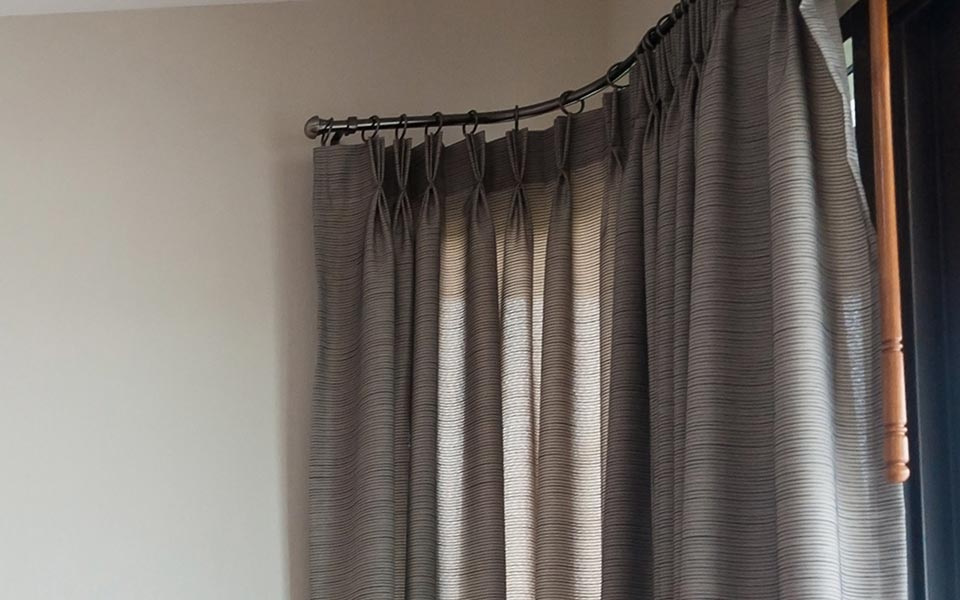
Pairing Curtains and Blinds
How you dress your windows has a huge impact both on the style of your room, and on how much light and privacy you have in that room. Each type of window dressing comes with its pros and cons, and people often find themselves trying to decide between curtains, with their aesthetic value and flexibility, or blinds, with their greater control over privacy and light levels. Why not get the best of both worlds by pairing curtains and blinds? This may seem like a larger expense up front, but at the end of the day, you will have a stylish and well-finished room while also being able to easily manage light levels and privacy in your home.
If you are open to pairing curtains with blinds, the opportunities to customize your décor are almost endless. If you want to have both privacy and natural light in your bedroom, you might want sheer curtains, but pairing those curtains with blackout blinds or roller blinds can help you manage light levels and sleep better. Conversely, if you live in a cold climate, you might want heavy curtains for insulation, and pairing these with a slatted or Venetian blind can allow you privacy even if you want the curtains open for more natural light.
Tips and Tricks for Pairing Curtains and Blinds
- Consider your needs and environment
What is the room used for, and how can window dressings help improve it? If the window faces onto a busy street, you may want to prioritize privacy when choosing your window treatments. If the room is a bedroom, consider how much control over light levels you want. In a very warm or very cold climate, consider how curtains and blinds can help insulate a room and keep the heat in – or out!
- Look at each room individually
Different rooms may have different purposes and also different decorative touches. Choose window treatments that complement the aesthetic of each room, rather than bulk-buying the same dressing for every window in the house and trying to make them fit.
- Choose blinds first, then curtains
Decide which blind best suits the room and then pair a curtain with it – both in fabric/construction and in aesthetic. Make sure patterns and colours complement each other.
- Hang with care
Make sure the height and size of the curtains and blinds in every window in a room are hung consistently. Also, hanging your curtains “high and wide” – with the curtain rod near the ceiling and the curtain hanging close to or touching the floor – creates the illusion of a more expansive space.
Pairing curtains and blinds allows you to maximize your decorative impact while also fulfilling the practical needs of the space. The possibilities are almost endless!
How to Choose Bedroom Blinds
March 17, 2022
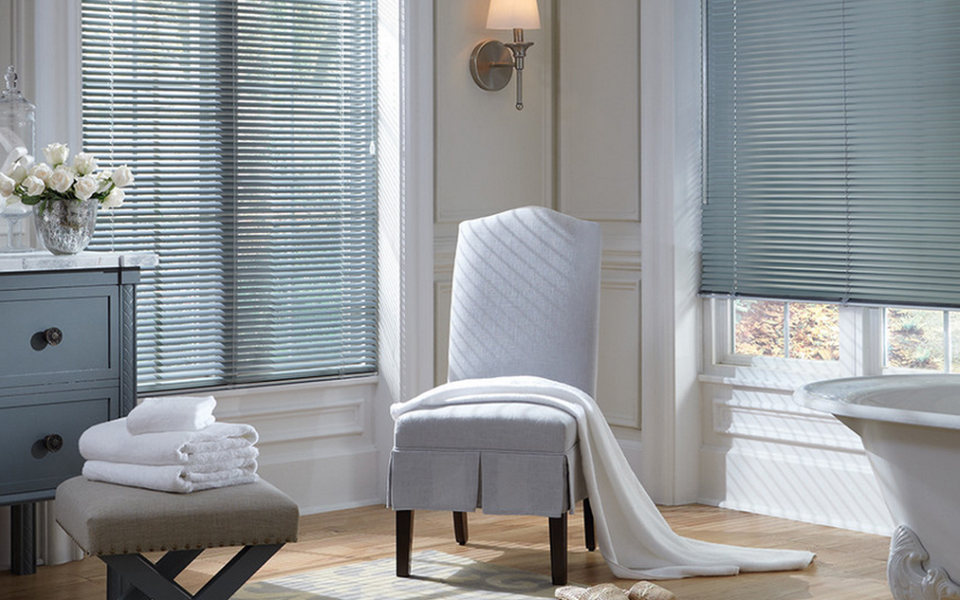
How to Choose Bedroom Blinds
Choosing blinds for your home requires careful consideration of the style and function of blinds. Many home owners lack experience with selecting window treatments, but design specialists can tell you that different blinds will offer different attributes. So, when it comes to how to choose bedroom blinds, it helps to consider factors such as privacy, light control, sound control, and aesthetic before you make a purchase. This guide to how to choose bedroom blinds can walk you through some of the most important questions to ask before making an investment in bedroom blinds.
Privacy and Light Control
Blinds offer many different options when it comes to privacy. For example, blackout blinds (as the name suggests) offer complete privacy and totally block light. This means there won’t be any prying eyes, but you also won’t get much natural light entering the room when the blinds are closed. Venetian blinds can also offer great privacy, but there are usually small holes in the slats that allow for the draw cord to control how open or closed the blinds may be. Roman blinds are also a great choice for privacy because they are constructed from thick materials and are lined to block out light and eyes.
Sound Control
A quiet and peaceful bedroom environment is optimal for sleep and relaxation. Fortunately, some bedroom blinds offer enhanced sound control. So, if you live on a busy street or in a busy neighbourhood, investing in blinds that improve sound control can make a huge difference when it comes to comfort. Honeycomb cell blinds and insulated blinds can help to reduce noise significantly and can also help with energy conservation too.
Aesthetic
Finally, the aesthetic of your bedroom blinds is also a very important consideration. Ultimately, your personal style is the key factor to keep in mind, but you also want to think of your home as a whole rather than in its parts. What does that mean? Well, you can consider the overall décor of your home and even its architecture when you are thinking about how to choose bedroom blinds. Some blinds will offer a contemporary aesthetic that doesn’t necessarily fit in a home with a rustic appeal.
Additionally, choosing colours and patterns for bedroom blinds that not only match the room but the overall design features of your home is a great approach. You don’t need to have the same kinds of blinds in every room, but you do want to consider consistency when choosing bedroom blinds.
When choosing bedroom blinds, don’t be shy – speak to experts about their recommendations and be prepared to share pictures of your home and its design features so that you can find the prefect blinds for your bedroom.
What are Residential Window Films?
February 22, 2022
What are Residential Window Films?
Residential window films are home window tinting materials that can enhance the privacy and energy efficiency of any home. If you live in a climate where the summers are hot and the winters are cold, residential window films are the perfect retrofit option for your windows. By applying residential window films to your current windows, you can improve energy efficiency and privacy while creating a sophisticated aesthetic for your windows.
Modern residential window films are made from materials that are specifically designed for tinting residential windows and for specific purposes. For example, some films will block 70% or more of the sun’s energy which can make a significant impact on your energy bills in the summer. Additionally, tints can also help to reduce heat transference and improve insulation during the winter months.
Residential window films are also available in a wide range of tints ranging from nearly opaque to transparent. While some window tints are purely designed to make an aesthetic impact, there are several varieties that can promote privacy and home security. Window films are also great installations in home offices or entertainment rooms to reduce glare of computer screens and televisions.
There are many benefits to installing residential window films. Some homeowners will find them easy to install as a DIY project while others will prefer to hire professionals for installation. Whichever the case, residential window films can improve energy efficiency and make living spaces more private and comfortable. They help to protect furniture, carpet, and window and wall coverings from damaging UV rays. And if residential window films protect your belongings from UVA and UVB rays, you know they will protect your skin too!
- Energy savings
- Comfort and privacy
- Protection from UVA and UVB rays
- Reduced glare on screens
- Improved safety
- Home aesthetic
- Affordable – window tinting materials cost between $2 and $10 per square foot
Ultimately, there are many benefits to installing residential window films and few drawbacks. With that in mind, homeowners should be mindful of their windows warranties. Additionally, while installation is straightforward, certain types of windows or those with unique features (e.g. curved windows or windows with latches) can present challenges to effective application of residential window films. Working with professionals to install your window tint can ensure that the tint is applied properly without cracks or bubbles.
Finally, residential window films demonstrate excellent durability. Many window films will last upwards of 20 years with proper maintenance. If you’re considering applying residential window films to any of the windows in your home, connect with your window coverings professional for suggestions on how to get the right residential window film depending on the type of window, your privacy and energy efficiency goals, and your desired aesthetic.
What are the Benefits of Custom Drapery?
January 20, 2022
What are the Benefits of Custom Drapery?
Window treatments are subtle but they can have a significant impact on the aesthetic of your home. Choosing the right window treatment also helps you to achieve better privacy, light control, and even sound control. Custom drapery is one option for covering your windows, but what are the benefits of custom drapery? Let’s have a closer look at some of the reasons homeowners choose to invest in custom drapery.
Precision
Whether you have custom windows or unique window sizes, custom drapes fit those windows perfectly. Ready-made window treatments and drapes are available in limited sizes, so you might find that they don’t provide the precision fit that you want. Plus, with custom drapery, you’ll also be able to find the right colour and/or design for your space. When you purchase custom window treatments, they are made to fit the measurements of your window perfectly and you’ll also be able to choose from the materials that match your style. Ultimately, custom drapes give you the freedom to size your window treatments precisely.
Variety
Another benefit of custom drapery is the variety of styles. Choosing custom drapery allows you to select the material that best fits your aesthetic while also adapting your window treatments for your functional needs. For example, though the terms drapes and curtains are often used interchangeably, they’re not the same. Drapes are made from heavier materials and offer exceptional privacy and light control. Drapes also bring a textural component to a room that is often suited to formal spaces. Curtains are lighter and contribute to a sense of space. Nevertheless, curtains can be backed with a liner or heavier materials to enhance privacy. No matter how you choose to treat your windows, custom drapery allows you to match materials to your style and function. You can also decide on the length of your drapes which allows for variety in aesthetic as well. With custom drapery, there are few limits to the variety of styles you can achieve.
Quality
Custom drapery also represents the essence of high-quality widow treatments. Professionally constructed from the best materials, custom drapery is easy to spot. You choose the fabrics, textures, colours that will enhance your interiors and then benefit from quality craftsmanship in the construction of your window treatments. Custom drapery looks and feels beautiful and it is made to last too!
Function
Finally, custom drapery is also a great functional choice. By investing in custom window treatments, you decide the perfect materials for your functional needs whether that be privacy, light control, sound control, or even energy efficiency. Indeed, custom drapes provide improved energy efficiency simply because they fit your windows better. When you choose the right fabrics, you can enhance this quality as custom drapes can help to manage heating and cooling costs.
Remember, custom drapery can require more time, effort, and money than ready-made alternatives, but often times the many benefits of custom window treatments justify these considerations.
Everything you need to Know about Roman Shade Blinds
December 22, 2021
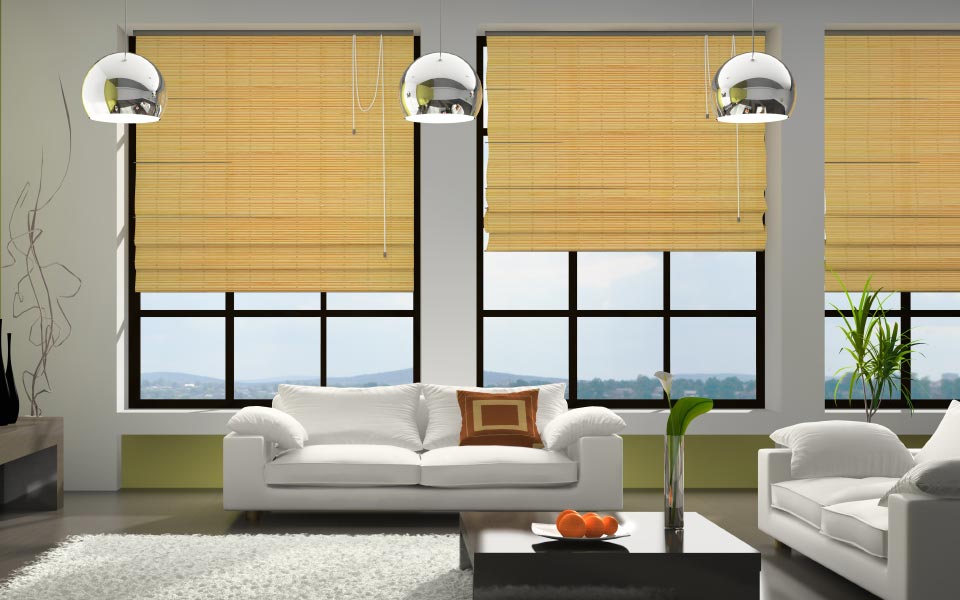
Everything you need to Know about Roman Shade Blinds
The varieties of window coverings available today can be mind boggling. When you narrow it down to the number of different types of blinds available, the options are still impressive. What’s more surprising still is the variety of roman shade blinds that can be installed on your windows. If you’re shopping for new window treatments, you may be asking yourself ‘what are roman shade blinds?’ And you may also want to know more about the different types of roman shades from which to choose. Let’s start with the basics and then dig a little deeper.
What are Roman Shades Blinds?
In basic terms, roman shades are window coverings constructed from soft fabrics. Roman shades hang such that they create a flat window treatment when they are in the extended position but fold neatly into horizontal segments when they are retracted. Roman shades are easy to operate and create a simple, sophisticated, and contemporary covering for your windows. Horizontal folds of roman shades are even and uniform and therefore represent a very clean and crisp aesthetic.
Interestingly, roman shades essentially date back to the Roman era. Outdoor arenas such as the Coliseum and even private homes utilized fabric coverings to block the glare of the sun. These coverings were not the same as modern roman shades, but they utilized string and pulley systems to extend and retract the covering very much like today’s roman shades. As such, contemporary roman shades borrowed their name from these early “window” treatments.
What are the Main Types of Roman Shades?
There are essentially two types of roman shades: flat and teardrop roman shades.
Made from a single, continuous length of fabric, flat roman shades hang flat when they are extended. Each horizontal section is supported by bars that add rigidity to the shade. Sturdy in design, flat roman shades provide a tailored appeal, but since they are made from soft fabrics they can be luxurious and elegant as well. Flat roman shades have a slim profile making them a great addition to French doors or windows with a narrow ledge.
Teardrop roman shades are also known as soft fold, hobbled, or looped roman shades. These shades appear to have loose folds as if they are rippling along your window. Somewhat less structured than flat roman shades, teardrop roman shades bring depth to the design of a room. Additionally, these roman shades have permanent folds that are maintained whether the shade is extended or retracted. These shades are a great match for more formal spaces, but can easily be adapted to the aesthetic of any room.
Now that you know a little more about roman shades, you can start looking for the perfect fit for your home. Remember, like many window coverings, roman shades are available in a wide variety of colours, patterns, and materials. Let your imagination run wild!
Tailored Valance Curtains, What are They?
September 23, 2021

Tailored Valance Curtains, What are They?
When it comes to window coverings, there seem to be endless options for homeowners to express their own personal style and to meet their unique functional needs. From blinds and shades to curtains and drapes, the possibilities are staggering. Tailored valance curtains are a style of window treatment that meets the specific dimensions of your window. With that in mind, tailored valance curtains aren’t necessarily customized even though they offer the appearance of a custom-fit.
There are many types of valances. Gathered valances can be adjusted to fit various window widths, but they are not considered tailored. Shaped valances, on the other hand, can be adjusted to fit windows of various widths but will give the appearance of a custom valance – ultimately, the valance looks tailored because of how it is installed on the window. Tailored valance curtains essentially fit snug to a window and offer a straight and/or flat appearance. In other words, if the valance fabric is a straight, horizontal line, it is a tailored valance curtain. Likewise, if the valance offers a flat appearance, it is also considered tailored. For example, ring top valances may have pleats or slight dips in the horizontal plane of the valance, but the fabric still hangs flat.
Ultimately, tailored valance curtains refer to a particular style of valance rather than the size or customizability of the valance. Sometimes, these valances are slightly wider than a window’s width, and they are stilled described as a tailored valance. However, if the fabric is excessively wide or needs to be bunched or gathered to fit the window, we wouldn’t describe them as tailored valance curtains.
Indeed, there is actually quite a lot of variability in tailored valance curtains. Ring top valances, rod pocket valances, and board mounted valances are all available as tailored valance curtains. They are available with a wide range of curtain fabrics, patterns, and colours so they make a great choice for any design motif. These valances provide a clean and contemporary element to your home’s décor, but they also match well with decadent or traditional designs. There really is very little limit to what you can do with tailored valance curtains.
Choosing the right window covering for the rooms in your home often comes down to personal choice. There are a lot of options for mixing and matching window coverings – valances go well with blinds and curtains, so once again you can see that your personal preference is often the guiding factor in selecting the right window covering. If you want more information or require assistance in choosing the right window covering for your home, your style, and your budget, it is always helpful to work with professional designers or window covering experts.
Vertical Shades for your Sliding Glass Doors
August 25, 2021

Vertical Shades for your Sliding Glass Doors
Window treatments are not only functional, but they make a design statement too. Depending on your décor, your choice of window treatments may vary. However, when it comes to window coverings for sliding glass doors, certain functional requirements will also influence your choice. Vertical shades for your sliding glass doors combine functionality without compromising aesthetic, so let’s take a closer look.
Types of Vertical Shades
There are two main types of vertical shades for your sliding glass doors: cellular shades and vertical blinds. Vertical cellular shades are known to offer exceptional energy efficiency making them the top choice for exterior access doors. In other words, when looking for the perfect vertical shades for your patio doors, for example; cellular shades are a great choice because they effectively trap air and provide extra insulation. Plus, cellular shades are available in a wide range of sizes or they can be custom made to fit any window. You’ll even get to choose from materials that represent a variety of colours, patterns, and textures so you can find the right shades no matter your décor.
Alternatively, vertical blinds are the most popular window treatment for sliding glass doors. With that in mind, you may think that vertical blinds are less attractive than more unique window coverings; but that is simply not the case. In fact, because of their popularity, vertical blinds are incredibly versatile as they are constructed from many different materials including vinyl, fabric, and aluminum. Plus, they are available in a range of colours, textures, and styles. Perhaps the main reason that vertical blinds are popular for sliding glass doors is aesthetic – they offer clean, contemporary lines that suit many design preferences.
Other Treatments for Sliding Doors
If you prefer to steer away from the more common styles of vertical blinds or vertical shades for sliding doors, there are alternative window treatments that are attractive and functional. For example, wood woven shades are made from natural woods and provide a stunning design element for your windows. Plus, these shades can be constructed from reclaimed woods making them an environmentally friendly choice that also offer exceptional durability.
Privacy sheers are another increasingly popular alternative to vertical shades for your sliding glass doors. Privacy sheers blend the benefits of drapes and vertical blinds as they are made from fabric strips on sheer fabric. These window coverings allow you to adjust for light control without compromising privacy – and they look great too!
If you’re looking for vertical shades for your sliding doors, or if you want to try something more unique, you’re sure to find a plethora of attractive options that fit any budget. Just remember to let your style shine!
Difference between Curtains and Blinds
June 21, 2021
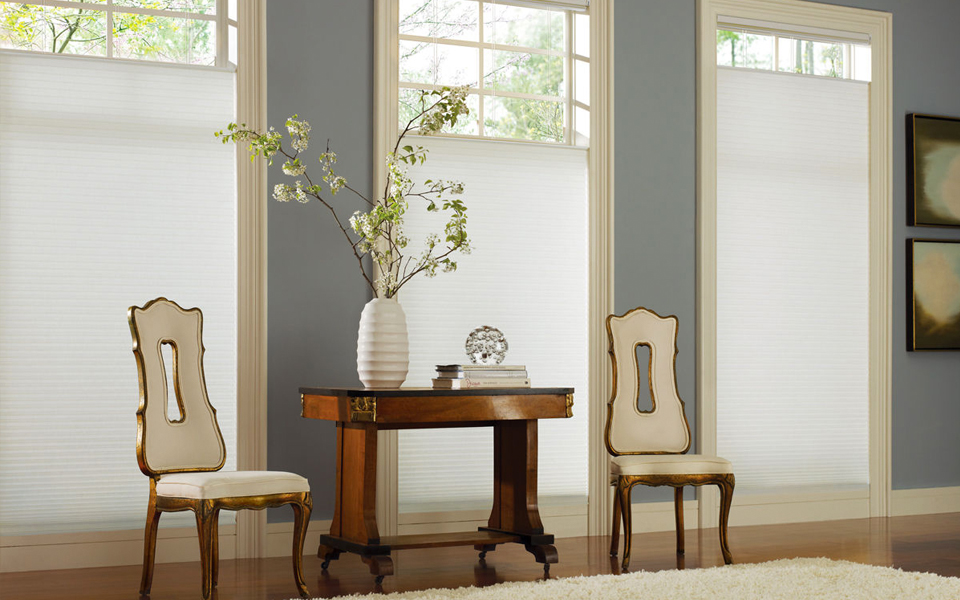
Difference between Curtains and Blinds
Alright, you’re probably thinking, “I can easily spot the difference between curtains and blinds” and I have no doubt that’s true. Nevertheless from a more technical standpoint, knowing about the different features of curtains and blinds can help you make the right choice for your style and your budget. Light control, insulation, and privacy features can vary, so let’s take a moment to learn more about the difference between curtains and blinds.
We’re going to start simple. Curtains and blinds both offer light control, privacy control, and even temperature control. While blinds are designed with moving slats and curtains are designed with lengths of fabric, each come with their own set of pros and cons. So, with that in mind, we’ll compare the difference between curtains and blinds in some key areas: cost, light and privacy control, maintenance, durability, sound and temperature control, and décor.
Cost
While this isn’t always the case, on average blinds will cost less. Depending on the type of material they are made from, blinds can cost significantly less. However, if you are looking for blinds that are made from natural materials or custom sizes, they can be more costly. Still, blinds are quick to install and usually cost less than $100 per window.
Light and Privacy Control
Curtains offer two options – open and closed. On the other hand, whether vertical or horizontal, blinds can be opened to varying degrees and can even be lifted or opened so windows are completely unobstructed. Of course, even when they are closed, blinds are not great at blocking light entirely, so for full privacy and light blocking, curtains are preferred.
Maintenance
Though it may seem cumbersome to clean blinds, their regular maintenance is usually easier. Most blinds can be dusted regularly to keep them clean, whereas curtains need to be removed from windows and washed. Some curtain fabrics will have very specific cleaning requirements making them a bit more challenging to maintain.
Durability
Synthetic materials such as plastic, vinyl, and aluminum are commonly used in the construction of blinds. These materials are highly durable, resistant to discolouration, and when well-maintained can last up to 20 years. As curtains are made from fabric, they can more easily be damaged. Rips, stains, and even mould or mildew growth make curtains less durable.
Insulation and Soundproofing
Whether you prefer curtains or blinds, both will offer some temperature and sound control; but, we usually see that curtains are superior in this realm. Heat and cold can move through the slats of blinds which is why curtains offer better protection. There are even thermal curtains which offer optimal temperature control.
Décor
Usually, curtains are more flexible from a design perspective. Various materials, colours, and patterns of curtains can be found to match almost any décor. Nevertheless, blinds are much more sophisticated and offer good variety for any décor. Many designers consider combining blinds and curtains for better design and functionality.
Now that you know more about the difference between curtains and blinds, you’ll be better positioned to choose the best window treatments for your home.
How to Choose Office Window Coverings
May 18, 2021
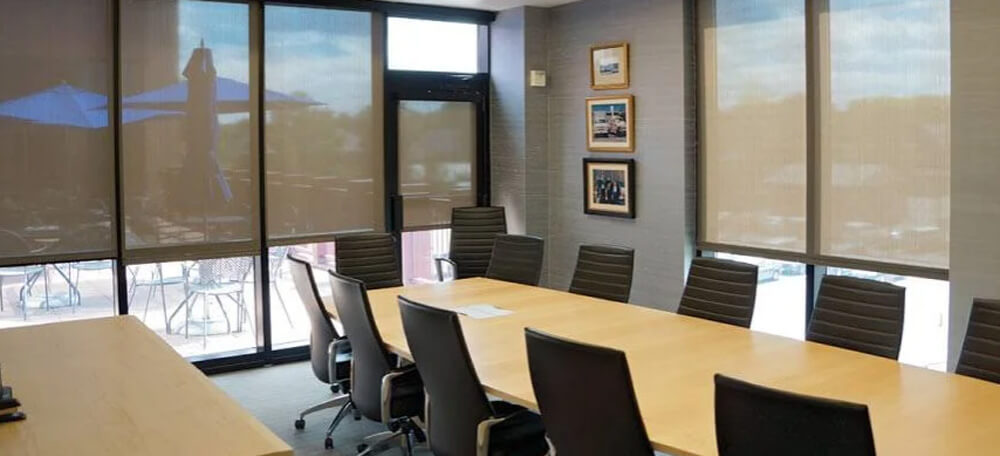
The right window coverings can have a huge impact on the aesthetic and function of your office space. You’re probably aware of the design influence of window coverings, but they can also improve qualities such as energy efficiency and sound and light control. As window coverings have such a significant environmental impact, it should be little surprise that they can also affect productivity and morale. So, how do you choose the right office window coverings?
There are several factors you need to consider when choosing window coverings for your business. Light control, energy efficiency, sound control, privacy, and style are just a few things to think about. Let’s take a look at some of the major features and functions of window coverings to help you choose the best window treatments for your office.
Environmental Control
Whether you are thinking about light, privacy, or sound, window coverings can make a big difference. Obviously, the main functions of window treatments relate to light control and privacy. Protecting your staff from sunlight is actually important – glare from screens can be damaging to the eyes and makes working on computers very difficult. Window coverings that allow you to take advantage of natural light are always advisable, but they need to be easily adjustable so that employees can achieve optimal lighting conditions. On the other hand, in some instances, lower light may be beneficial; for example, if you are displaying a presentation through a projector, less light makes the presentation more visible.
With respect to privacy, you may want adaptable control. If your office is on the 10th floor of a high rise, this may be less of an issue. However, if you’re on the ground floor and passersby can look in your windows, privacy probably matters more. Fortunately, window coverings that allow for lighting control will also provide better privacy control.
Along the same lines as privacy, sound control may also be important to you. Some window coverings block sound effectively, so consider privacy and confidentiality when choosing window coverings and consider options that are known to provide a sound barrier.
Style and Function
Next, when considering window coverings you want to get the perfect blend of style and function. For example, depending on the treatment, you’ll find different window coverings offer different features. Finding energy efficient, durable, and sustainable window treatments may be a high priority for you, or you may be prioritizing design. Evaluate your priorities so you can select your office window coverings accordingly.
Ultimately, there are a wide range of suitable window coverings for any office setting. Finding the right window coverings requires consideration of a variety of factors so you may find consulting with a professional helps you find the perfect fit from your office window coverings.
What are Roman Shades?
February 22, 2021
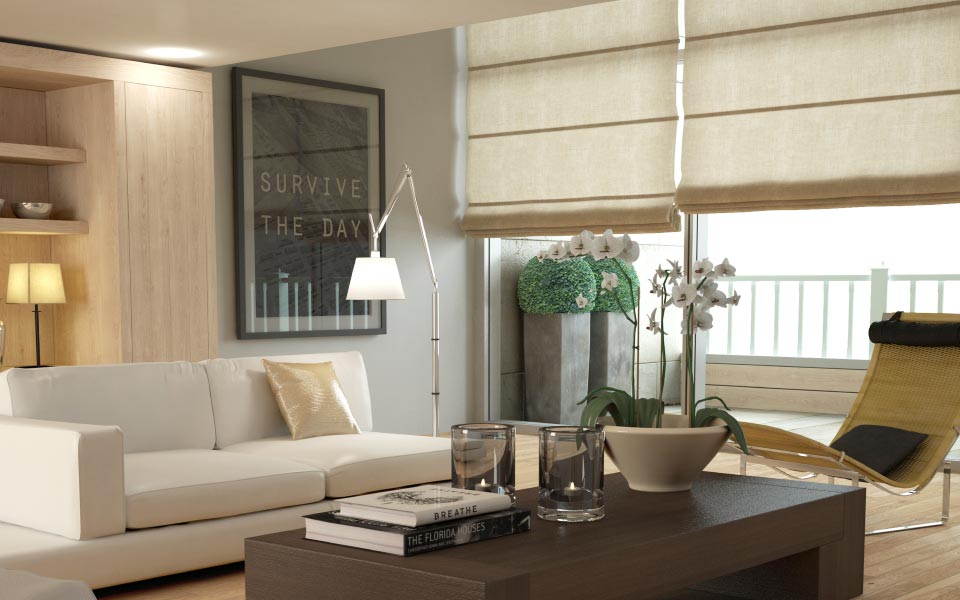
What are Roman Shades?
Window treatments come in all shapes and sizes; from curtains and drapes to blinds and shades, there are so many window treatments to choose from to perfectly accent any room. Choosing the right window covering for your home or business depends on a number of factors – not only is style a major consideration, but different materials and window treatments will be better suited for different functions. Nevertheless, when it comes to durable, attractive, and versatile window treatments, Roman shades are among the most popular options for home and business interiors. So then, what are roman shades and what do you need to know about them? Let’s take a closer look.
Simple, stylish, and functional – Roman shades are a modern choice for window coverings. You can recognize Roman shades by their design. These window coverings lay flat against a window and when lifted stack discretely at the top of your window. Because Roman shades are sleek and can be made from a wide range of materials, they fit the décor of almost any room seamlessly. Additionally, Roman shades contribute to energy efficiency by mitigating heat transference so rooms stay cooler in the summer and warmer in the winter. Roman shades are even great for light control making them the perfect choice when you want to completely block out light or to allow for filtered light while maintaining privacy.
There are myriad benefits to investing in Roman shades. For example, they are designed to operate smoothly and easily, and they even come in motorized varieties so you can control your shades at the push of a button. When buying Roman shades, you’ll find a wide range of pre-fabricated styles and sizes that will fit most standard windows. However, you can also choose customized Roman shades and pick the colour, fabric, and design that suits you best.
Another benefit of Roman shades is that they can be mounted inside or outside your window frame. Inside mounted Roman shades will fall flush with the window frame so that you can combine them with other window treatments depending on your design or functional needs. On the other hand, outside mounted Roman shades can be installed so that they cover the entire surface of the window frame allowing for optimal privacy and light control.
Roman shades also feature different types of folds. Flat fold shades are simple and allow for the shade to rest flat to the window when lowered. European folds create a straight edge at the bottom because they have a rod sewn into the edge of the shade. Soft folds drape elegantly over each other and bring more texture to your window. And finally, plain folds are visible even when the shade is lowered somewhat mirroring the traditional appearance of window blinds.
Roman shades are beautiful and adaptable window coverings that match well with contemporary or traditional designs.
Pictures of Drapes and Shades from past projects
December 15, 2020

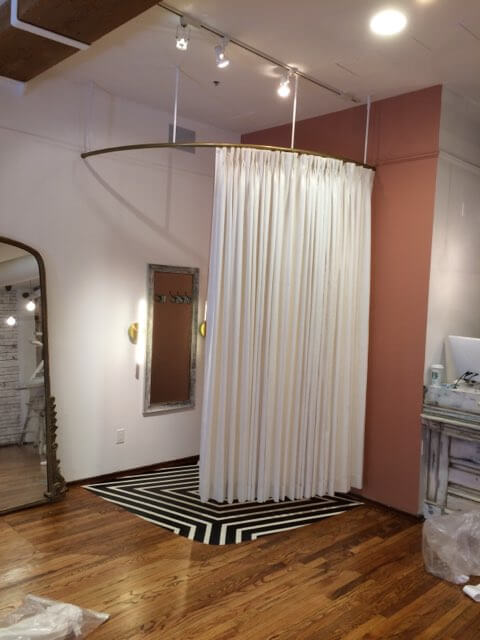

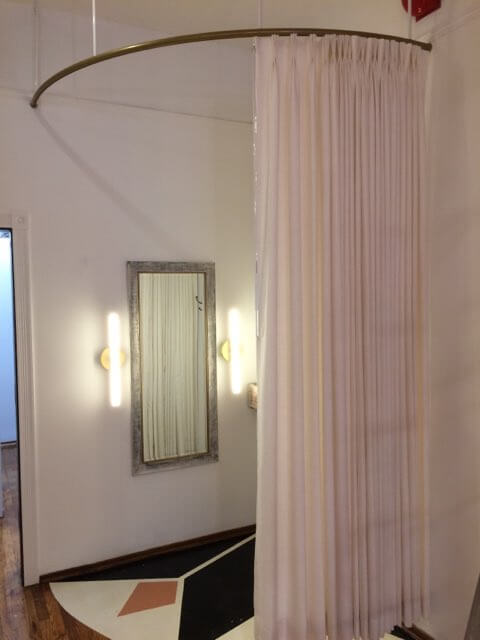
Roman Shade Styles
November 24, 2020
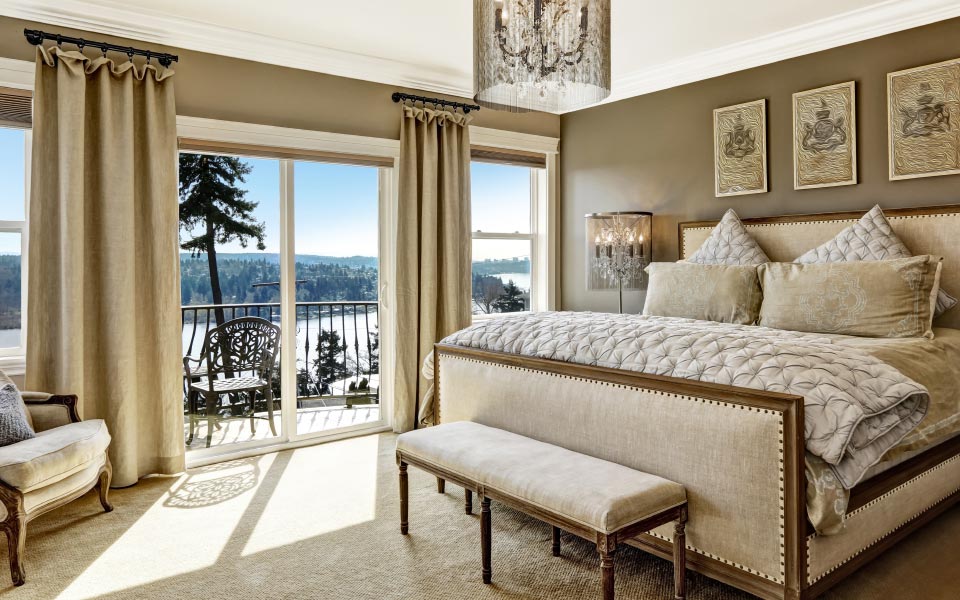
Roman shades are roman shades, aren’t they? In fact, these soft fabric window coverings are versatile with respect to both aesthetic and function. Roman shades are an increasingly popular window treatment because they match well with any décor – contemporary, traditional, elegant, or sleek. When you really want to make a design statement, roman shades are an excellent choice; but they’re more than just a pretty accent for your windows – roman shades offer a range of functional benefits making them a great fit for any room.
The streamlined appearance of roman shades combined with the classic feel of fabric on windows belies the functional range of these blinds. Designed from a solid piece of fabric that folds into even stacks when raised or lowered, roman shades are also available in rolling varieties. Rolling roman shades do not feature internal cords while the stacking alternative eliminates exposed cords – both offer excellent safety features for homes with young children. These functional features also lend to the clean aesthetic of roman shades.
In addition to rolling or folding, the main styles of roman shades are flat roman shades and soft fold roman shades. Flat roman shades are named as such because they hang flat to the window. Typically, they fold neatly along the top when lifted. Flat roman shades are slim and fit well with sliding doors and French doors. Soft fold roman shades essentially fold loosely and create a looped appearance when raised.
Roman shades are also available in a wide range of fabrics to bring rich colours, beautiful textures, and unique details to style your windows. Likewise, the variety of fabrics lends functional features as well. Polyester roman shades, for example, are easy to clean and stand up well to the rigours of family life. Moreover, different materials mean you have more options for light control. From sheer to black out, roman shades provide the privacy control you want or need.
Roman shades also feature many technological advances in window coverings. I’m sure you never considered the “technology” of blinds or shades, but roman shades are among the most advanced. Roman shade designs have been integrated with cellular shade designs to provide exceptional energy efficiency properties. This means less heat loss in the winter and cooler indoor temperatures in the summer as well as reduced energy costs. Once again, all roman shades are available in a number of woven and non-woven fabrics with various choices for colour, texture, pattern, and privacy.
So whatever your design preference, functional need, or budget, you’re sure to find beautiful roman shades that suit your unique purpose. Kitchens, bathroom, living rooms, and bedrooms can all be fitted with roman shades that are suited perfectly to their environment.
How to Pick Blinds for your Home
October 21, 2020
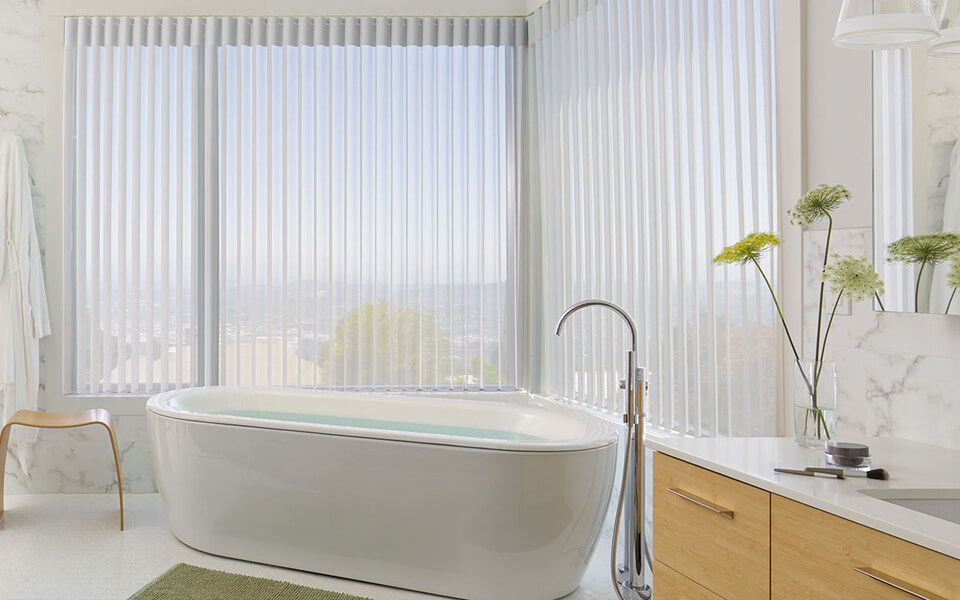
Vancouver Blinds
Choosing the right blinds for your home requires careful consideration of the characteristics of blinds. From light control and insulation to aesthetics, window shape, and cost – knowing how to pick blinds for your home will help you find the perfect match for your home. By identifying and prioritizing your preferences for window coverings, you can more easily navigate the wide variety of window blinds available today and choose the blinds that work best for any room or style.
Light
When it comes to light control, you have many options including light filtering blinds, blackout blinds, and blinds with slats. Light filtering window treatments are essentially translucent and allow a moderate amount of light to pass through. These types of blinds are often found in kitchens and dining areas. On the other hand, blackout blinds are exactly as they sound – they completely block the passage of light making them a great option for bedrooms and even living rooms. Blinds may also feature slats that can be adjusted to control the amount of light entering a room. On the other hand, shades do not feature slats which makes them great for privacy but provide less control over lighting.
Insulation
Some blinds are designed to improve energy efficiency. If you live in a climate with extreme temperatures (hot or cold), insulated window treatments can save you up to 25% on your annual heating and cooling costs. Cellular shades, which are also known as honeycomb or cell shades, are the most common style of window blinds for improved insulation.
Aesthetics
Of course, when you are investing in window treatments, you are also probably considering the aesthetic impact of your new blinds. Consider the colour, style, patterns, and even materials used in the fabrication of your window blinds to find the ideal treatment to complement the style and design of your home.
Shape
Blinds can be made to fit almost any shape of window including oversized windows, arch windows, doors, skylights, and uniquely shaped windows. In many cases, you’ll have to choose custom blinds to accommodate irregular window shapes; whereas rectangular windows can often be fitted with pre-fabricated blinds in standard sizing.
Cost
The final consideration in choosing the right window blinds is cost. In general, custom blinds will cost more so it’s important to consider whether your home’s windows will require custom blinds. Once again, unique window shapes or sizes will often require custom blinds and you should expect this to impact your budget for window treatments. Also, certain materials (particularly natural fibers and real wood blinds) tend to cost more. Nevertheless, no matter your style or budget, you are sure to find the right window treatments for your home as long as you take the time to carefully review the many options available to you and choose the treatment that fits your home and your budget.
Another Project by Arlene’s – Custom Drapes and Blinds
September 24, 2020
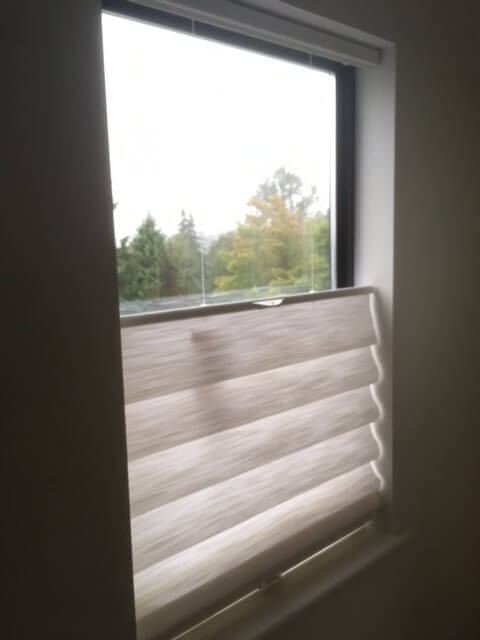
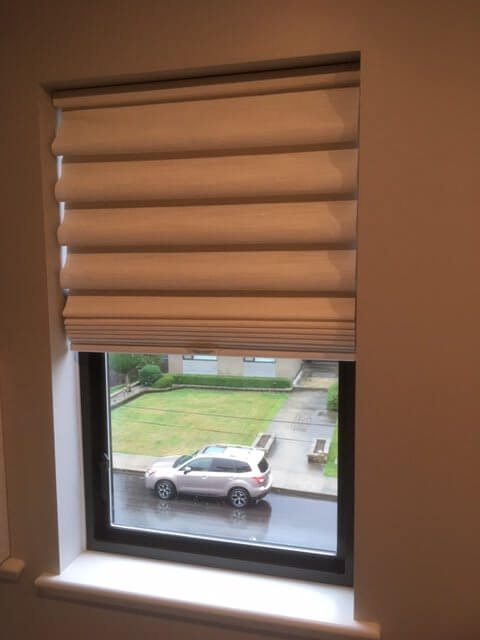


Custom vs Store Bought Blinds
September 21, 2020
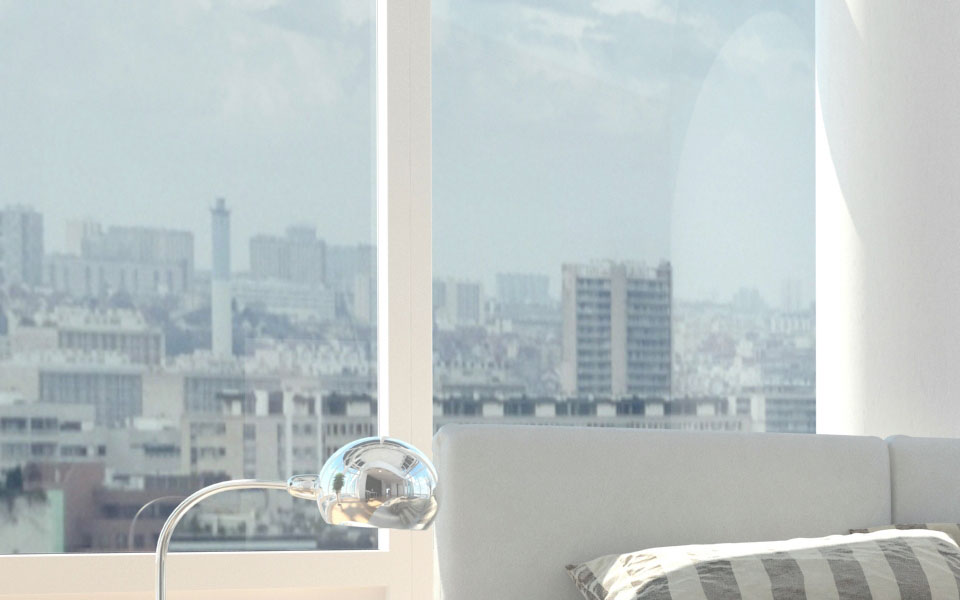
Custom vs Store Bought Blinds
Updating your window coverings can have a huge impact on the appearance of any room. Whether you are looking to adapt your style or your old window coverings have seen better days, upgrading your window treatments requires careful consideration of the many options available to you. Curtains and window blinds are among the most common options for window treatments; but even when you decide to go with window blinds, there are still many options from which to choose. One of the most important considerations is whether to go with custom or store bought blinds. Because custom blinds tend to be more expensive, many home owners seek store bought alternatives. That being said, there are many benefits to choosing custom versus store bought blinds. Fit, style, and function can be perfectly matched to your home and needs when you choose custom window blinds.
Fits like a Glove
No matter the shape or size of your window, custom window blinds make the perfect fit every time. Store bought blinds tend to be available only in standard window sizes and homeowners often have to compromise the fit of width, length, or both when choosing store bought blinds over custom blinds. Unfortunately, without the perfect fit, you also compromise light and privacy control, not to mention the impact on design. Custom blinds are made to the exact dimensions of your windows so make a better choice especially for oddly sized or shaped windows.
Your Home, Your Style
Another benefit of custom window blinds is the variety of style options available. You can choose between different types of blinds and different materials so that you achieve the ideal aesthetic for your home. Many basic, store bought blinds are available in limited colours and materials whereas the only limits on custom blinds are the limits of your imagination.
It’s a Match!
When homeowners choose to replace all the blinds in their home, custom blinds are often the preferred choice for consistency. Not only will you struggle to find matching blinds when your windows are not standard sizes, you may not always be able to get matching store bought blinds for all your windows – it really depends on the variety of sizes offered by the manufacturer. Custom blinds are built for your home and your windows, so making sure they match is easy. You’ll get the right size, the right materials, and the right finish for a polished, consistent home style.
Quality
Finally, customer window blinds are certainly more expensive than store bought alternatives, but they are often made from high quality, durable materials. They are designed to last for years while also providing bonus features such as energy conservation and sound control in addition to light and privacy control.
So, while you may find that you need a bigger budget for custom blinds, the benefits of these window treatments over store bought blinds make them a great investment in the long run.
What are Motorized Blinds?
July 21, 2020

Sure, there were many different fabrics made with various designs and colours, but there were curtains. Today, window coverings have come a long way and the style choices available are impressive – you can choose from curtains, shades, and blinds, but even within each of these categories there are myriad options to consider. Among the most advanced window coverings are motorized blinds. But, what are motorized blinds?
Let’s start with a simple definition – motorized window blinds are blinds that can be raised and lowered mechanically. The blinds are controlled with a motor which can likewise be controlled through a remote control or other device. Motorized blinds are sophisticated and convenient, so it should come as no surprise that these window coverings are the go-to choice for smart homes. Indeed, even the way we control motorized blinds has changed drastically over the last couple decades.
That’s right, motorized blinds have been available for at least 20 years; but these window coverings traditionally were controlled by a simple “up/down” switch. Recent advances in technology allow for motorized blinds to be controlled even when you’re not at home. For example, motorized blinds can be set on a timer so they can be raised and lowered at specific times of the day – even when you are at work or away on vacation. In fact, motorized window coverings have become so advanced that you can even control them with an app.
There are many benefits to installing motorized blinds – convenience, security, functionality, and style. As already suggested, motorized window coverings are exceptionally convenient. Controlling their movement with the push of a button or even through modern apps makes these window coverings the ideal choice for your home. Additionally, the convenience of motorized window blinds makes them perfect for office spaces or any building with multiple rooms and windows. Even hard-to-reach windows can be adorned with motorized blinds so that you can easily control light and privacy.
Another great benefit of motorized blinds is additional security. Because you can program them to open and close at different times of the day or even have complete control through apps and other devices when you’re not home, you can give the illusion that somebody is always home even when you’re away.
Motorized blinds are also functional in homes, offices, and other workspaces from salons to retail outlets. Consider the time and energy you can save by programming your blinds to open and adjust throughout the day depending on the amount of light or privacy required. Many motorized blinds feature multiple programs so you can have absolute control with minimal effort.
Finally, motorized window blinds are unique and stylish. They come in a variety of designs and fabrics so you can find the perfect fit for any space.
Motorized Window Coverings
January 21, 2020
Whether you are looking for privacy, light control, or simply enhancing your home’s décor, you are on the market for new window coverings. Today, there are many options to choose from including blinds (vertical or horizontal), shades, and curtains and drapes. An increasingly common choice for homeowners, motorized window coverings are a convenient option that provides the privacy and light control you need in a variety of attractive designs. Indeed, motorized window coverings give you unparalleled control and adjustability without compromising style.

Many homeowners cite ease of use as the main reason they choose motorized window coverings. Using a remote control, motorized blinds, shades, and curtains can be raised, tilted, and closed without ever leaving the comfort of your chair. Plus, for hard to reach windows, motorized window treatments provide a safe and effective alternative to climbing stools, steps, or ladders to make minor adjustments at skylights or floor-to-vaulted ceiling windows.
Likewise, for south facing windows or for homes in climates with long summer days, motorized window coverings allow you to adjust your blinds for perfect lighting. With motorized treatments, gone are the days when you suffer through glare on screens or sunny early mornings that interrupt your sleep. Most motorized treatments allow you a wide range of adjustment options so you can set your blinds and window coverings to the exact position for any situation.
The technology of motorized window treatments is also advancing. In the past, you may only have the option to open, close, or tilt blinds and other coverings; but now with smart homes and mobile apps, you can schedule your window coverings to open and close at convenient times and even control them from the road. Your smart phone or tablet essentially gives you access to adjust your window coverings from anywhere in the world. For many homeowners, this means added security because you never need to worry about whether you closed your blinds, but also you can give the appearance of being home when you’re actually miles away…even hundreds or thousands of miles away.
When you make the switch to motorized window coverings, you will wonder what took you so long. Motorized window treatments give you ultimate control and convenience as you adjust your windows treatments from anywhere in your home and indeed anywhere in the world. So, if you’re looking for new, attractive, and convenient ways to manage window treatments, you should consider motorized options. These are certainly the future of window coverings and they allow you to control privacy and light even in the most difficult to reach locations. Plus, motorized window treatments are sophisticated, luxurious, and attractive. There are so many great reasons to invest in motorized window coverings – what are you waiting for?
Visit one of our showrooms or click here for a complimentary consultation. We look forward to helping you make the most of your windows!
Three interior design mistakes to avoid when buying window treatments
December 2, 2018
The way you treat your windows makes a big difference in how you enjoy your home. Done right, window treatments will serve you in a variety of ways:
- Reduce or enhance the light coming into your rooms throughout different hours of the day
- Provide privacy
- Help with temperature control, keeping spaces warm in winter and cool in summer
- Reflect your unique style and taste, and the look you want in each room
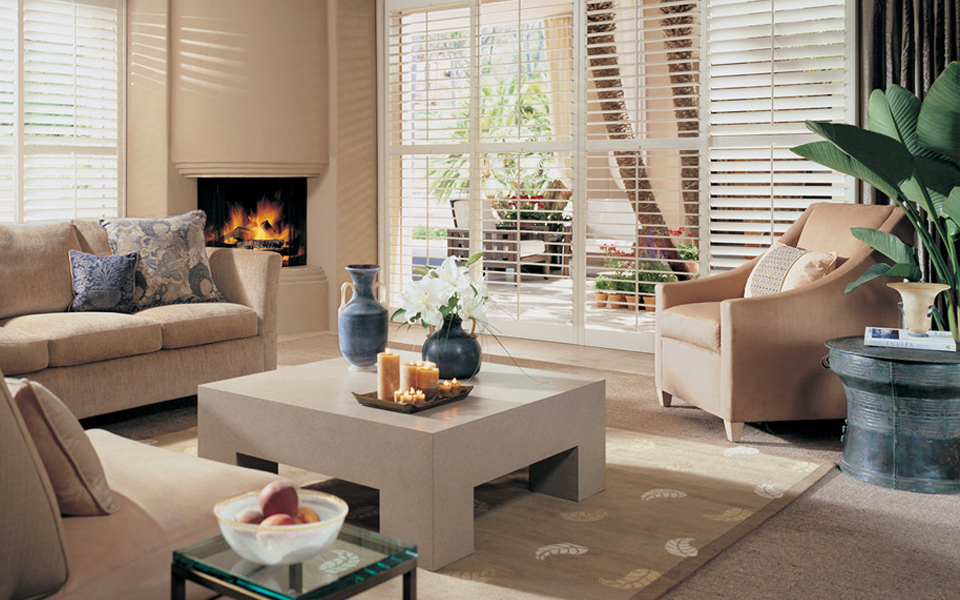 Blinds, shades and curtains can even subtly improve the dimensional limitations of your space, making windows appear larger and ceilings higher.
Blinds, shades and curtains can even subtly improve the dimensional limitations of your space, making windows appear larger and ceilings higher.
When poorly matched or fitted, however, they work against all the things that you want in your home: comfort, privacy, atmosphere and style. Our professional consultants have seen it all when it comes to window treatments, and we can help you navigate the possibilities and the pitfalls.
For starters, here are three mistakes to avoid when choosing your blinds, drapes and shades.
Forgetting to consider location and materials
Different rooms ask different things of your window coverings. Kitchens and entryway mudrooms need window treatments that can be easily cleaned, for example. You most likely don’t want to put honeycomb blinds behind your kitchen sink, or near a stove. Bathrooms, along with utility or laundry rooms need materials that won’t warp due to moisture.
Alternative woods like Everwood – guaranteed not to yellow, warp, or bow – can be just the right thing for these spaces.
You can almost always find the right material for the job without sacrificing your sense of style. Just make sure that you get some advice on your options, learning how each one will interact over the long-term with the way the room gets used.
Mounting too low – and cutting draperies too short
 Many people assume that their window treatments should be hung very close to the top of the window. This tends to compress the size of the window, and also brings the eye down, which makes your space look smaller. Instead, a good guideline is to go up much closer to the ceiling or molding— within an inch or two.
Many people assume that their window treatments should be hung very close to the top of the window. This tends to compress the size of the window, and also brings the eye down, which makes your space look smaller. Instead, a good guideline is to go up much closer to the ceiling or molding— within an inch or two.
In short, hang your hardware high. Doing so makes the most of the space between the window and ceiling, which otherwise tends to be overlooked and underutilized. Aiming up will elongate your windows and give a sense of spaciousness to the room by making the ceiling appear higher.
If you are incorporating curtains, a related principle is to make sure that they’re not cut too high. The ideal is that curtains extend to just barely above the floor, clearing it by a quarter-inch or just slightly more.
You can achieve a romantic, Old World effect in certain rooms with curtains that “puddle” on the floor; however for reasons of safety, cleanliness, and unnecessary wear or damage, be sure that these are spaces that are never occupied by pets or children.
Neglecting the view from outside
 As noted, different rooms may need different treatments depending on your taste and on what the rooms themselves require. One thing to watch out for – and that it’s easy to forget until it’s too late – is how your home appears from the outside.
As noted, different rooms may need different treatments depending on your taste and on what the rooms themselves require. One thing to watch out for – and that it’s easy to forget until it’s too late – is how your home appears from the outside.
For each face of your home, and really for any vantage point that can be had on it from outside, you want to have a consistent look. You don’t want to be looking back at your home from the backyard or the street and see five mismatched types of window treatments. Eclectic can be a great style on the interior, but you don’t want a “patchwork” appearance to cause your home to lose curb appeal.
This is not an issue if you’re able to go with the same style of blinds, shades or curtains throughout your home. But if you have different styles or types in some of your rooms, be sure to work with a professional consultant to help you achieve as cohesive a look as possible when seen from the outside. There are solutions to be had, such as drapery backings, louvered blinds, or shades that all share the same colour.
There are many other pitfalls that professional consultants who know window treatments can help you avoid. They’ll help you define and choose ideal proportions and measurements, sort quality materials from inferior ones, and help you see through sketchy warranties with holes in them.
At Arlene’s we offer a wide range of draperies, fabrics and window treatments, with a special focus on the excellent options produced by Hunter Douglas, a world leader in blind and shade technology. Hunter Douglas has thousands of fabrics and colours that add livability and beauty to your home, along with solid warranties and long-term functionality like antimicrobial fabric protection.
Visit one of our showrooms or click here for a complimentary consultation. We look forward to helping you make the most of your windows!
Can Blackout Drapes Help Your Kids Thrive?
August 29, 2018
 Blackout drapery can help children who are having difficulty getting the sleep they need. When kids don’t get enough nighttime rest— whether they can’t fall asleep, wake often during the night, or get up too early—it can affect their moods, health and development.
Blackout drapery can help children who are having difficulty getting the sleep they need. When kids don’t get enough nighttime rest— whether they can’t fall asleep, wake often during the night, or get up too early—it can affect their moods, health and development.
“Sleep is food for the brain,” says the National Sleep Foundation. So how much sleep is enough? School-aged children need between nine and 12 hours of sleep at night.
Ensuring good sleep patterns will lay a foundation that will last for the rest of their lives. According to the University of Michigan Children’s Hospital, you can tell your kids are getting enough sleep if they:
- Fall asleep within 15 to 30 minutes of going to bed
- Wake up easily at the time they need to get up and don’t need you to keep prodding them to get up
- Are awake and alert all day, and don’t need a nap during the day
Unfortunately, many kids begin trending toward greater and greater sleep deprivation as they get older. One survey of kindergarten through fourth-grade kids found that 10% of them were falling asleep in school.
Another study found that only 15% of teenagers reported getting more than eight and a half hours of sleep on school nights.
For young people, some of the effects of sleep deprivation are:
- Reduced concentration
- Lessened immunity to sickness
- Impaired ability to perform in sports and other activities
Lack of sleep can also lead to increased use of unhealthy foods containing sugar and caffeine as kids try to perk themselves up.
More significantly, a lack of sleep leads to dangerous accidents. More than 100,000 car accidents happen annually due to drowsiness and people falling asleep at the wheel, according to the National Sleep Foundation.
Seeing the Light, And the Darkness
 So how do we help ensure our kids get the rest they need? As you might imagine, light is a key factor in sleep.
So how do we help ensure our kids get the rest they need? As you might imagine, light is a key factor in sleep.
“Light is a powerful guide for your body,” says the National Sleep Foundation, in their guide to getting a good night’s rest.
“In part through the connections between the eyes and the brain’s biological timekeeper, light rays influence chemistry and behaviour and keep us in sync with the ebb and flow of the day.”
Humans evolved before the advent of artificial lighting and electricity, and our rhythms of waking and sleeping are oriented to work with the light of the sun. Morning sunlight activates our bodies and minds, waking us up and bringing alertness and energy.
Darkness, on the other hand, triggers the body to release sleep hormones— melatonin—that prepare us for sleep. Our muscles relax, our body temperature gets lower and we start to feel drowsy. Melatonin levels tend to peak in our bodies in the wee hours of the night, around 3 a.m.
However, working with our body’s natural rhythms, and allowing for the real darkness that sends sleep signals to our brain, is difficult when we live in homes that can be perpetually bright 24 hours a day. It’s also made more challenging by our outside environments, which can be illuminated throughout the night by streetlights, signs and other lights.
At night, the stimulation and alertness that light creates in us works against us, posing a problem for healthy, refreshing sleep.
Sleep Solutions for Kids, And Everyone Else
There are many ways to help your children get the sleep they need. Consistent bedtime routines can help, as well as limiting their exposure to bright screens (phones, tablets, computers, television) in the hours before they go to bed.
Blackout draperies are also critical for ensuring kids—and the rest of us— get good sleep.
“Have blinds, curtains or drapes that can cocoon you in darkness by night,” says the National Sleep Foundation, “but that you can easily pull back to bathe the room in sunlight when you wake.”
Blackout window treatments create the ideal sleeping environment by blocking virtually 100% of incoming light. They’re perfect for kids’ rooms, and for all of us who are sensitive to light coming into our rooms from outside.
They’re also great for shift workers who must sleep during the day, for light sleepers and of course for home theatres.
Blackout lining is made of poly-cotton cloth, which is then coated with an acrylic foam and made opaque. Fine hotels use this same material in their blackout drapery.
Some Things to Remember When Choosing Blackout Drapes
Blackout draperies provide excellent privacy, keeping out unwanted light and reducing noise from exterior sources like traffic.
They can also help insulate your home, keeping it cooler in summer and warmer in winter. In most homes, 10-25% of thermal energy loss is from windows. The right window treatments will reduce your energy bill, keeping rooms where they’re installed cooler in summer and warmer in winter.
Blackout window coverings can also improve your entertainment experience. They’re perfect for home theatres with projector televisions, providing a dramatic difference in picture quality.
Best of all, you won’t have to give up style to get these benefits. Seen from inside, our drapes and roman shades made with blackout linings look like any other window covering.
Some things to remember when choosing blackout window treatments:
- Medium to heavy fabrics—which are able to take the liner’s extra weight — are your best choice when using a blackout lining.
- The backing can cause light-coloured or neutral fabrics to take on a grayish hue, so try to choose a fabric with a deep enough colour to hide the blackout liner.
- To block the maximum amount of incoming light, and create the perfect indoor environment, be sure to take good measurements and fit them correctly to the window.
Arlene’s Has Your Sleep Solutions
At Arlene’s, we have a wide range of blackout-friendly fabrics to choose from, and our knowledgeable staff will help you make the best choice for each room.
If you want to block out light at night, reduce noise, and increase energy efficiency, we’ve got the solutions you need— and we’ll get them for you with quality and style.
Give us a call, visit one of our Lower Mainland showrooms, or click here for a complimentary consultation. We’re here to help!

